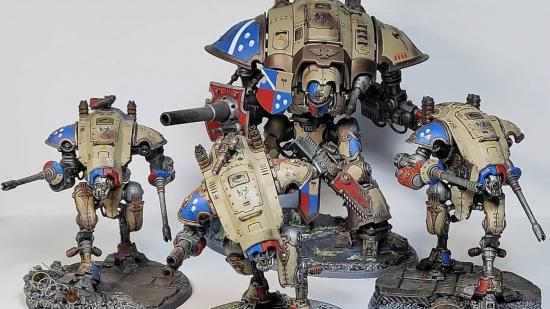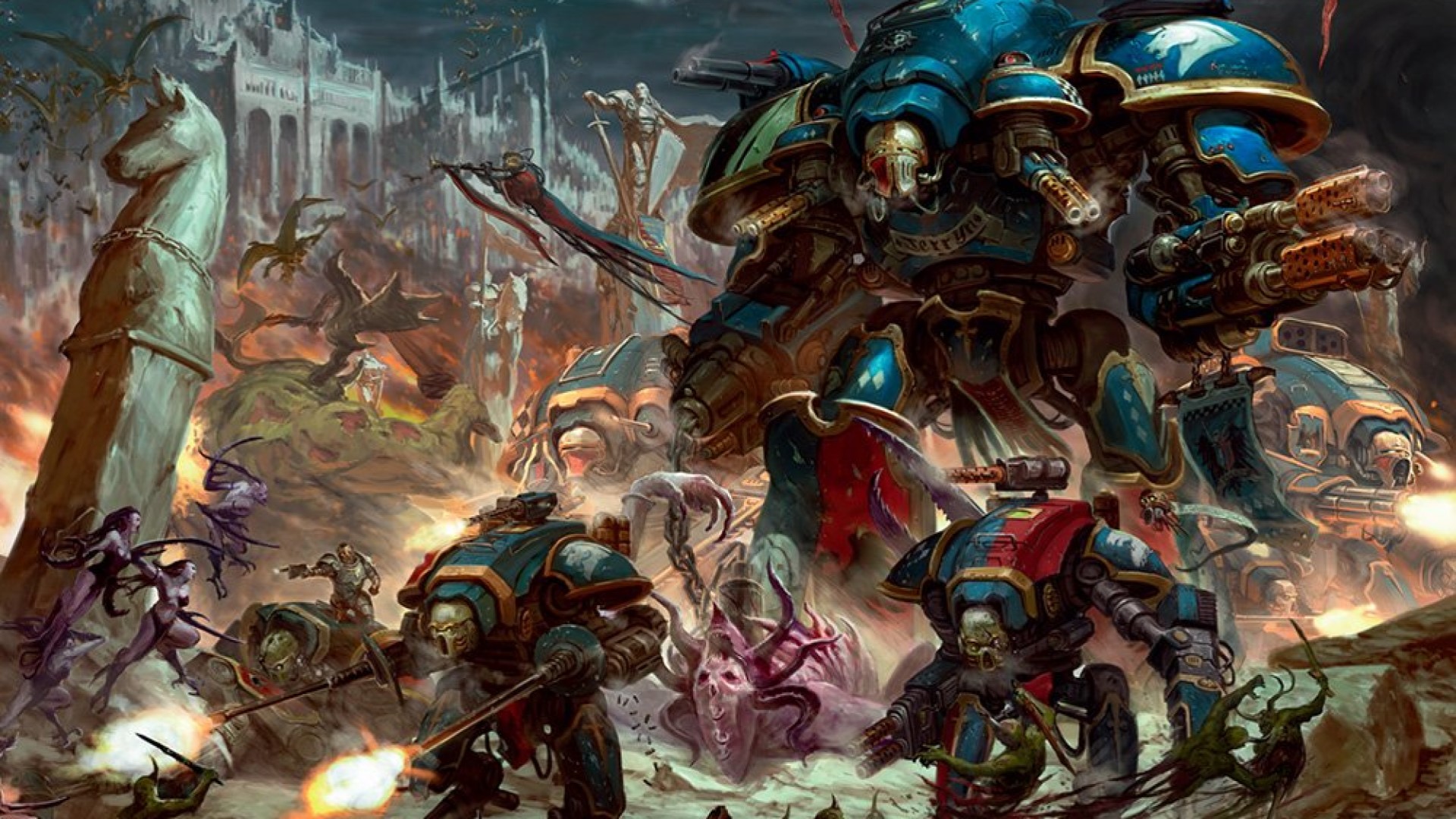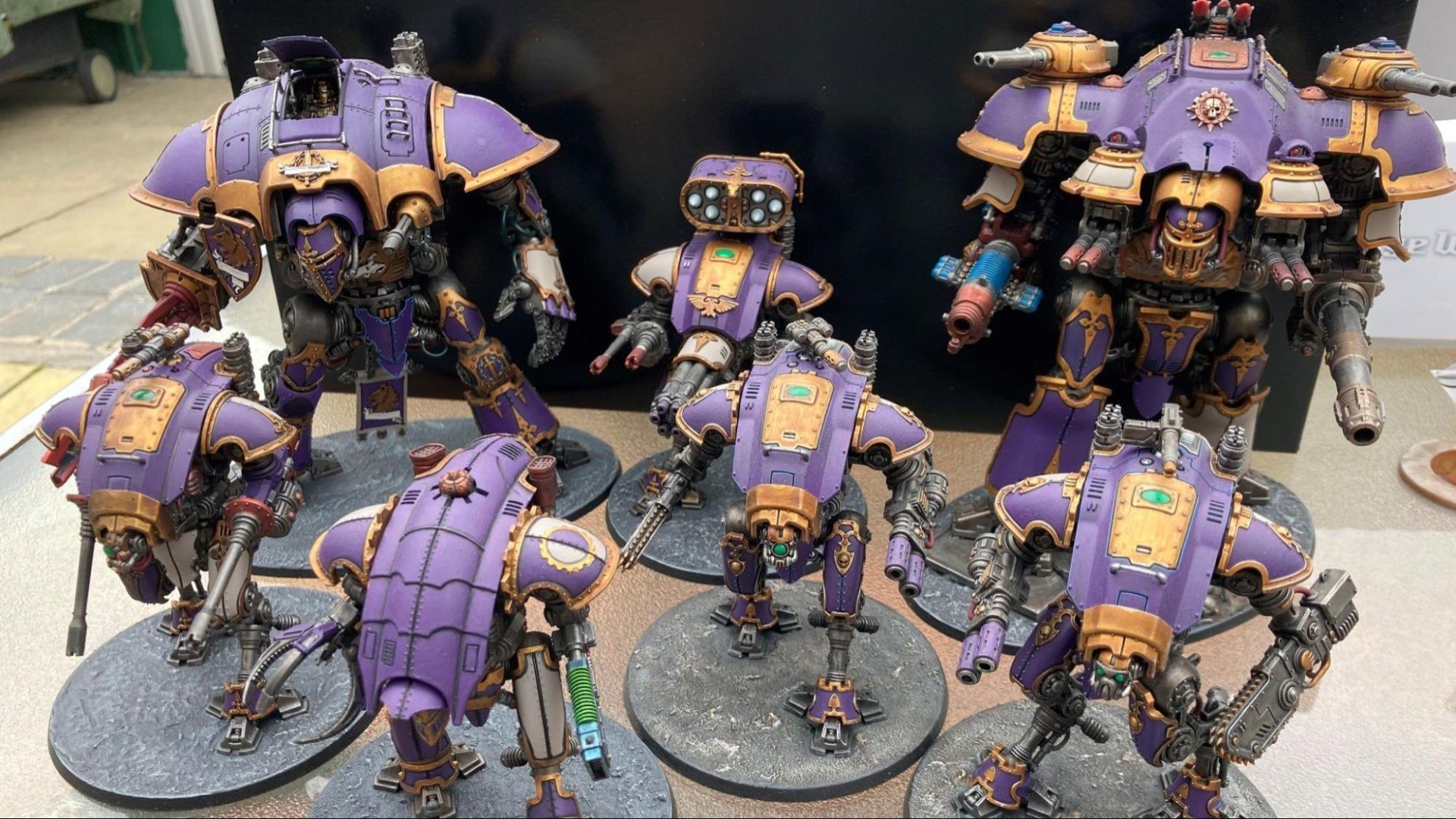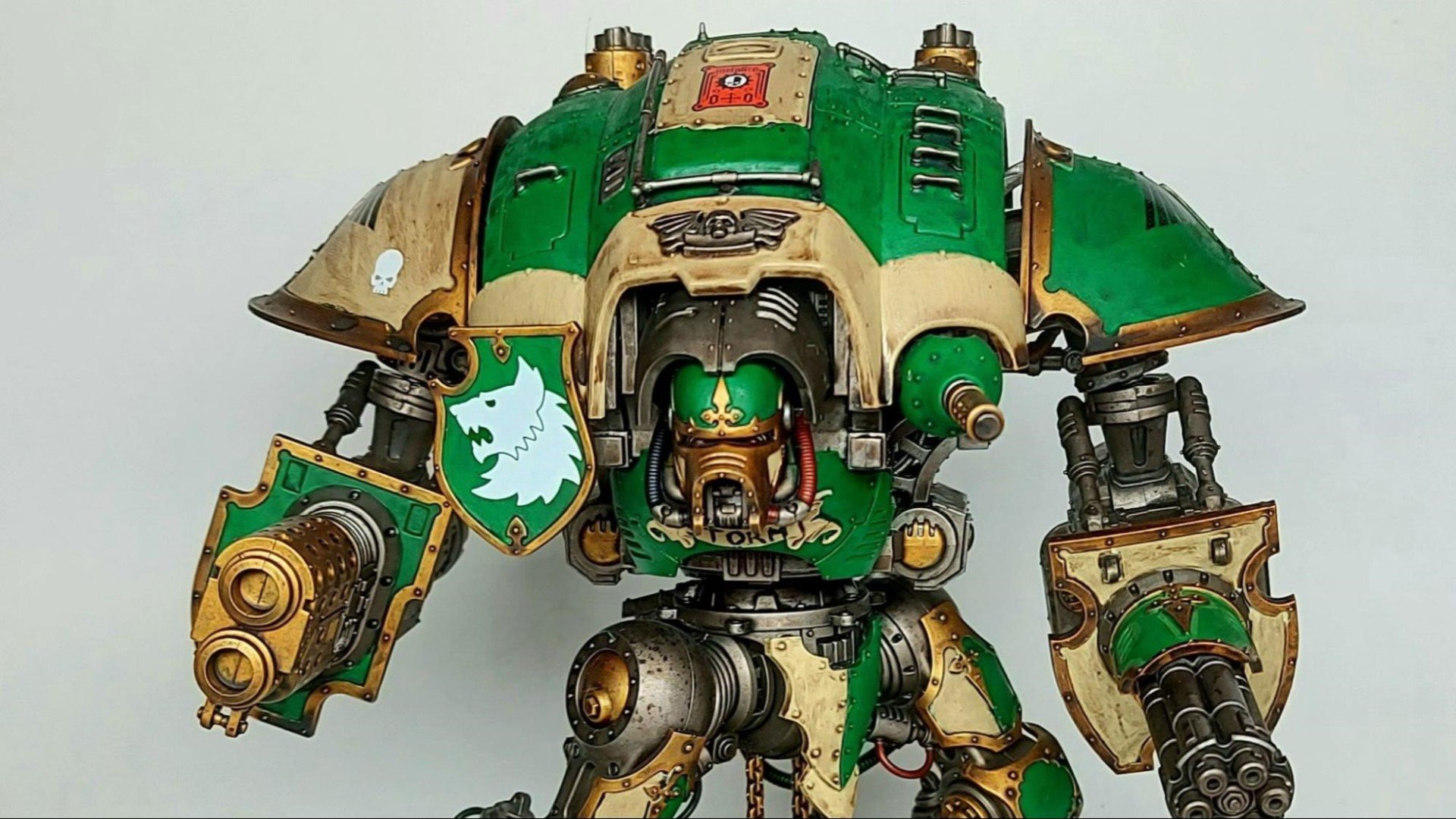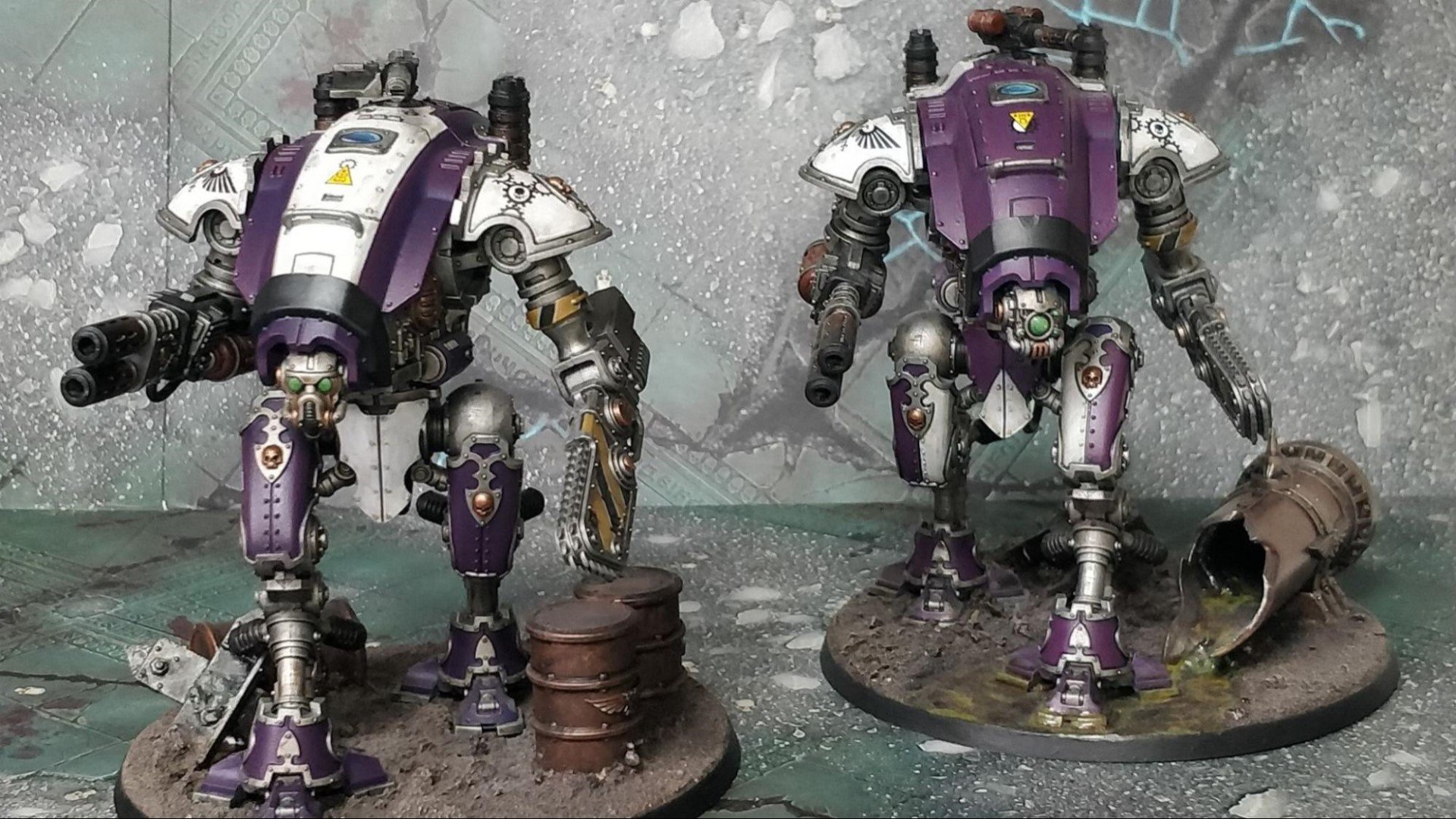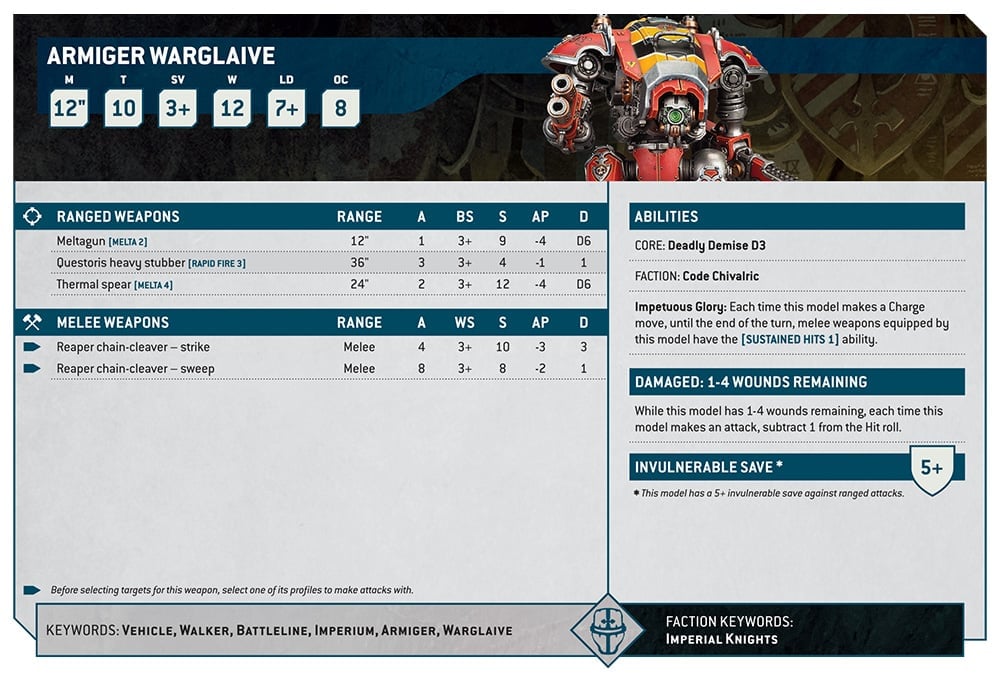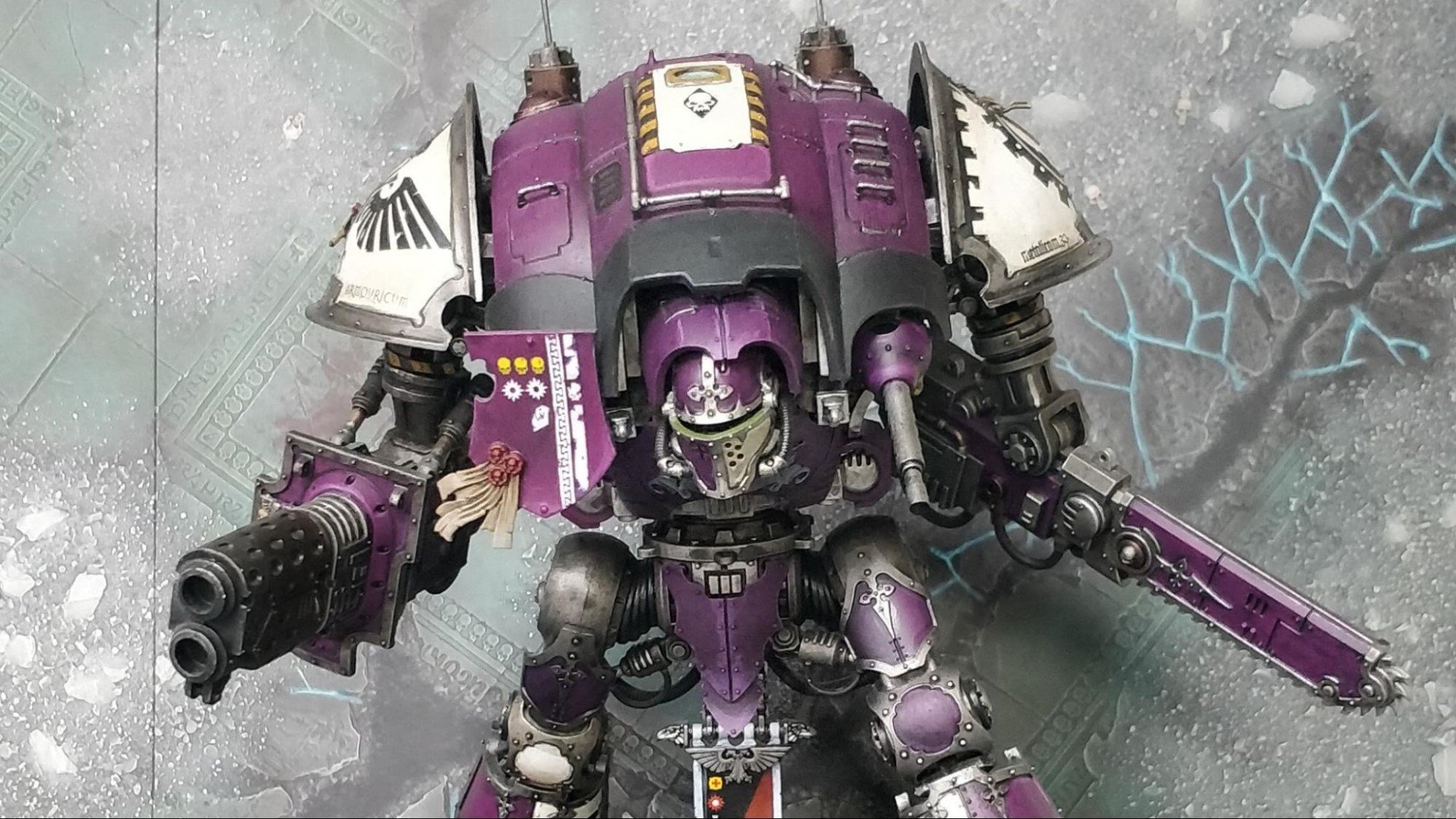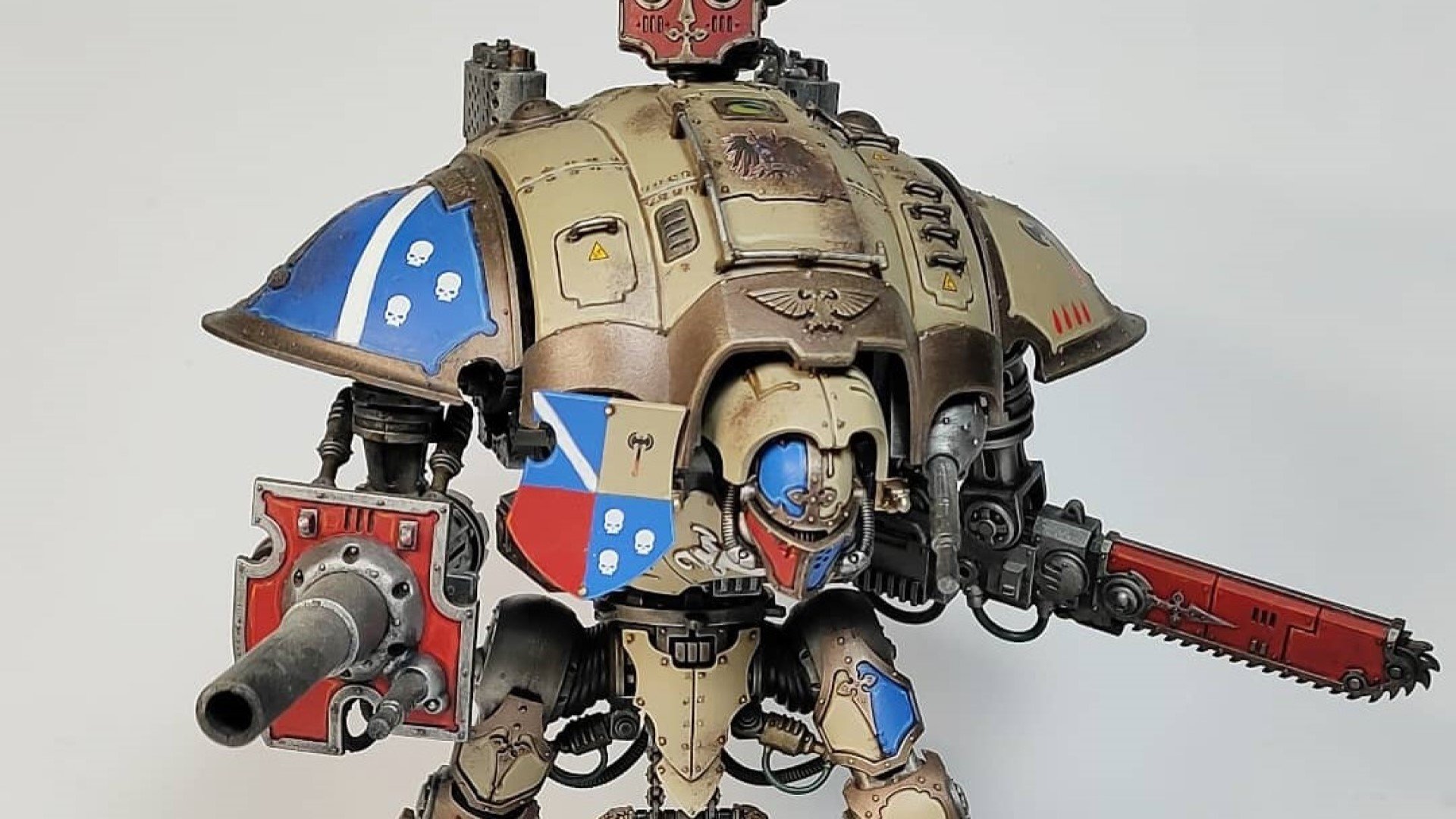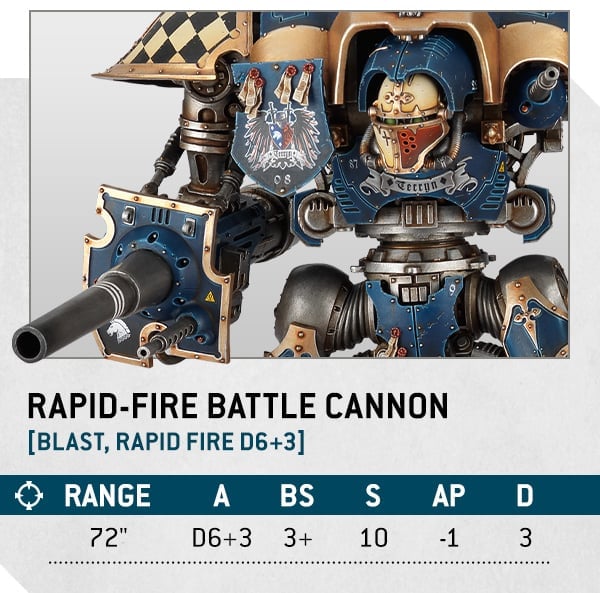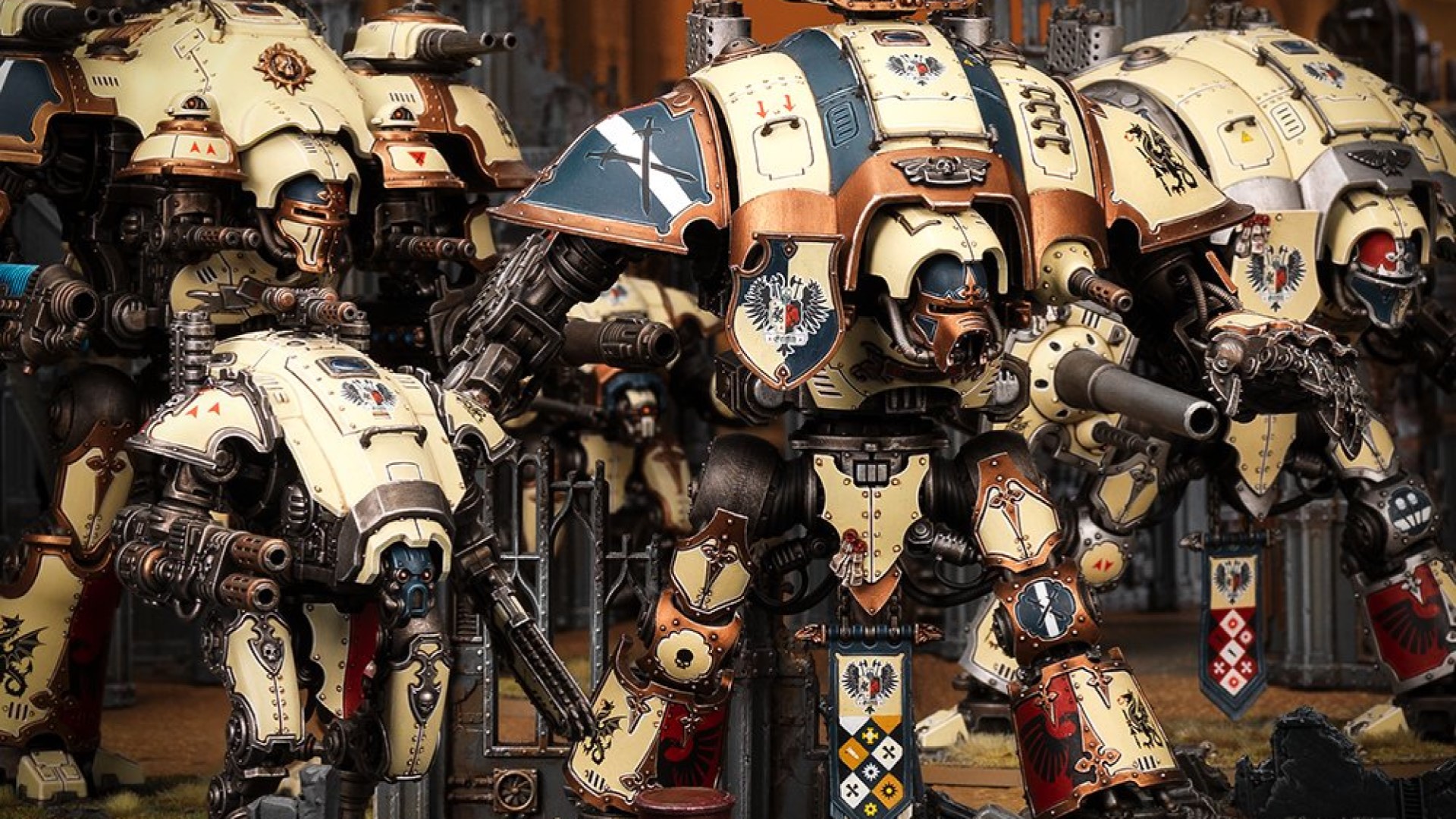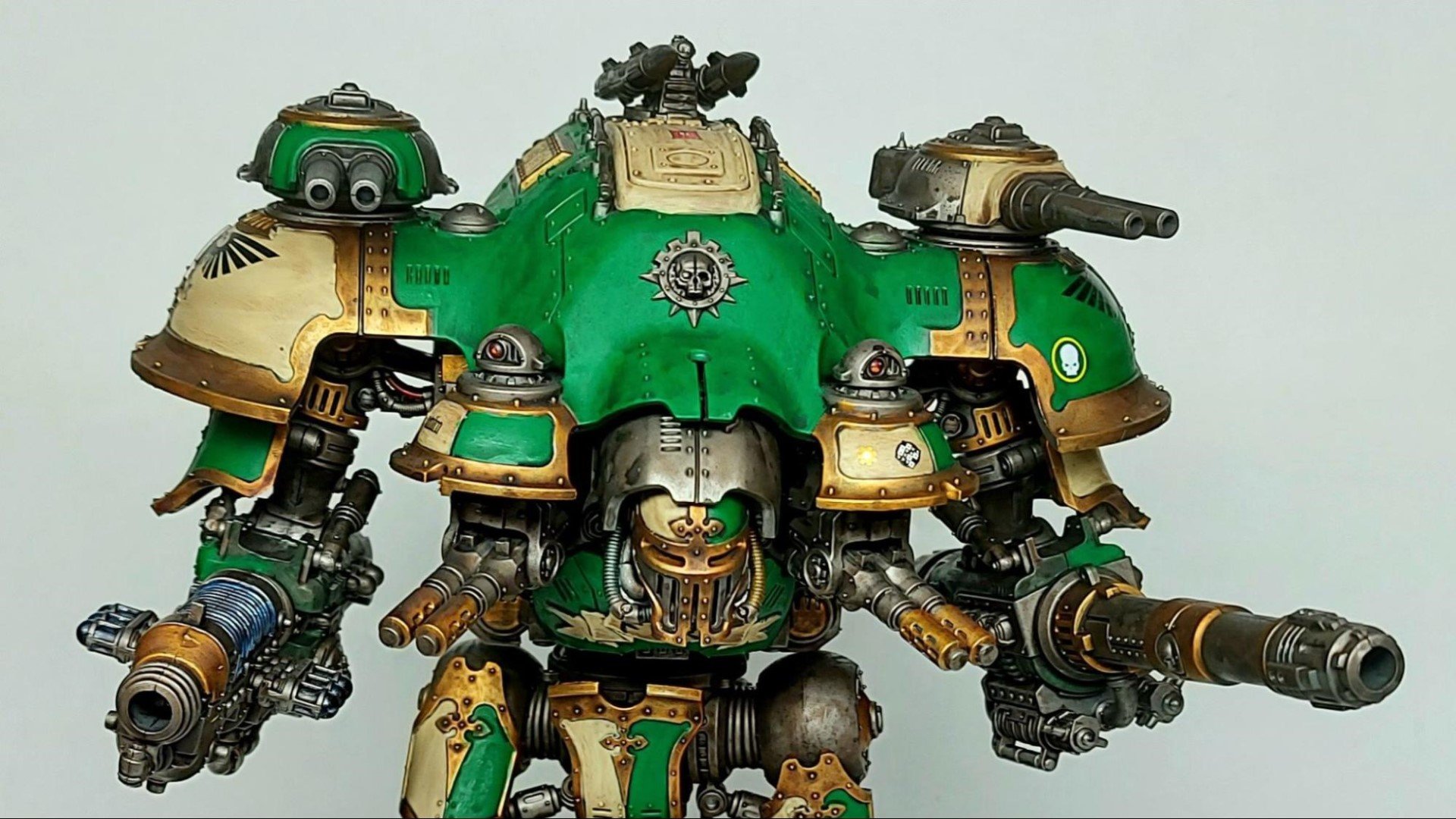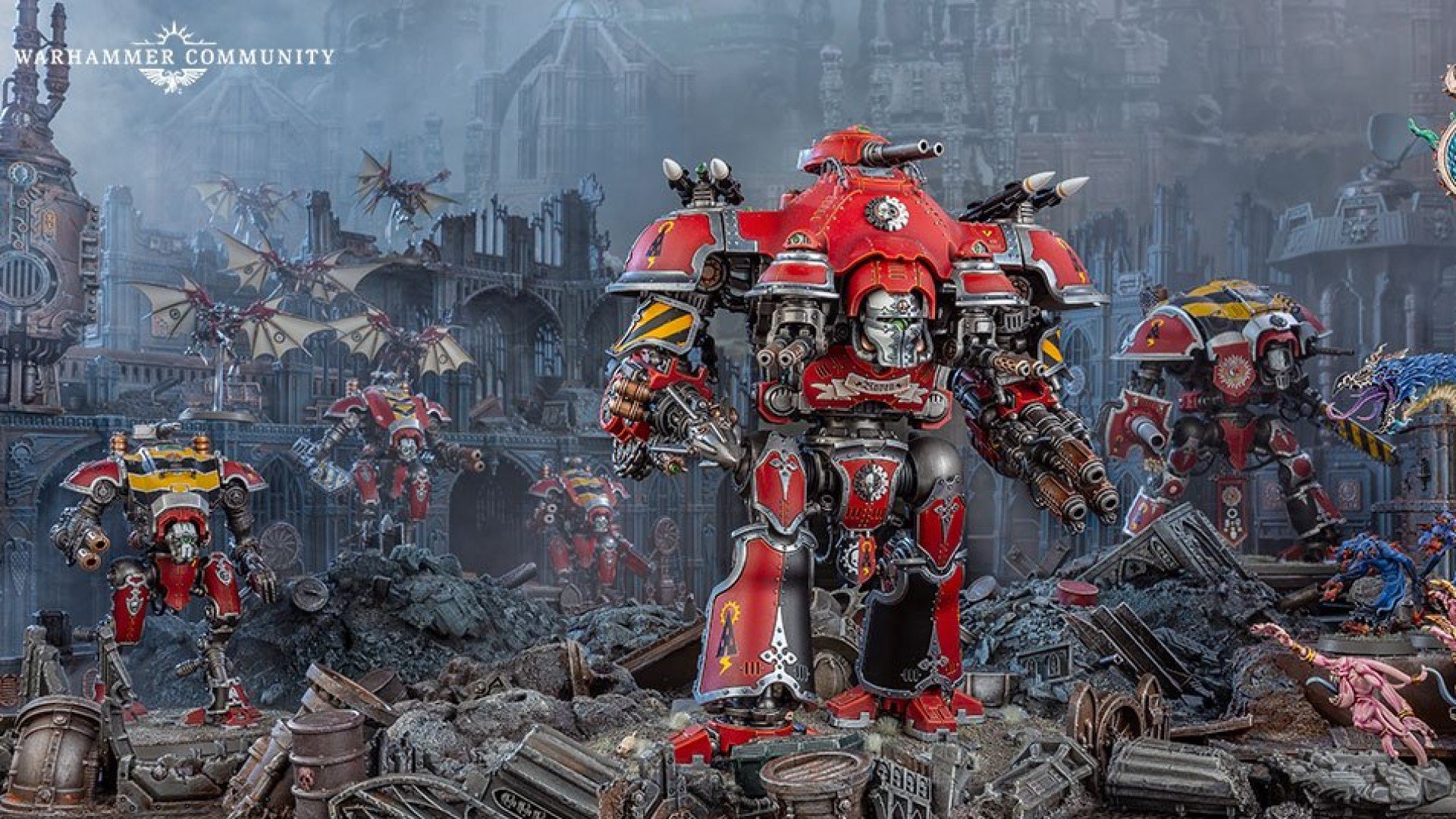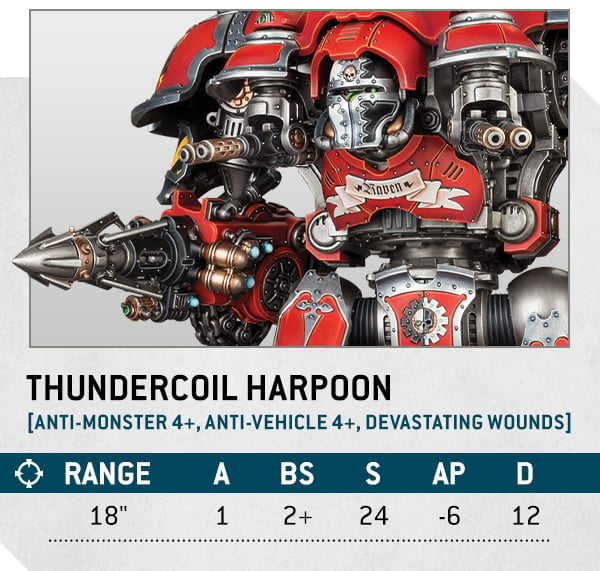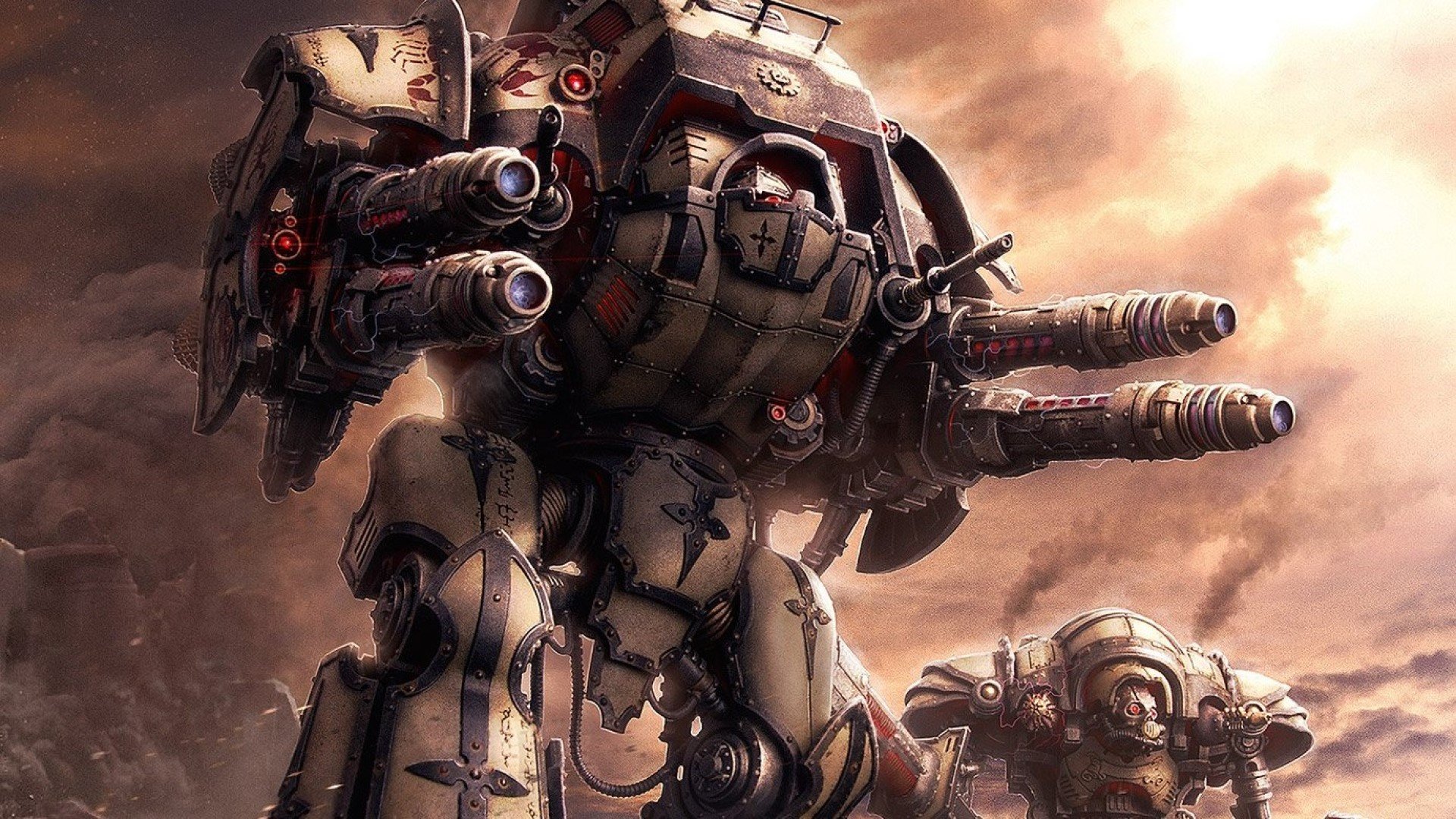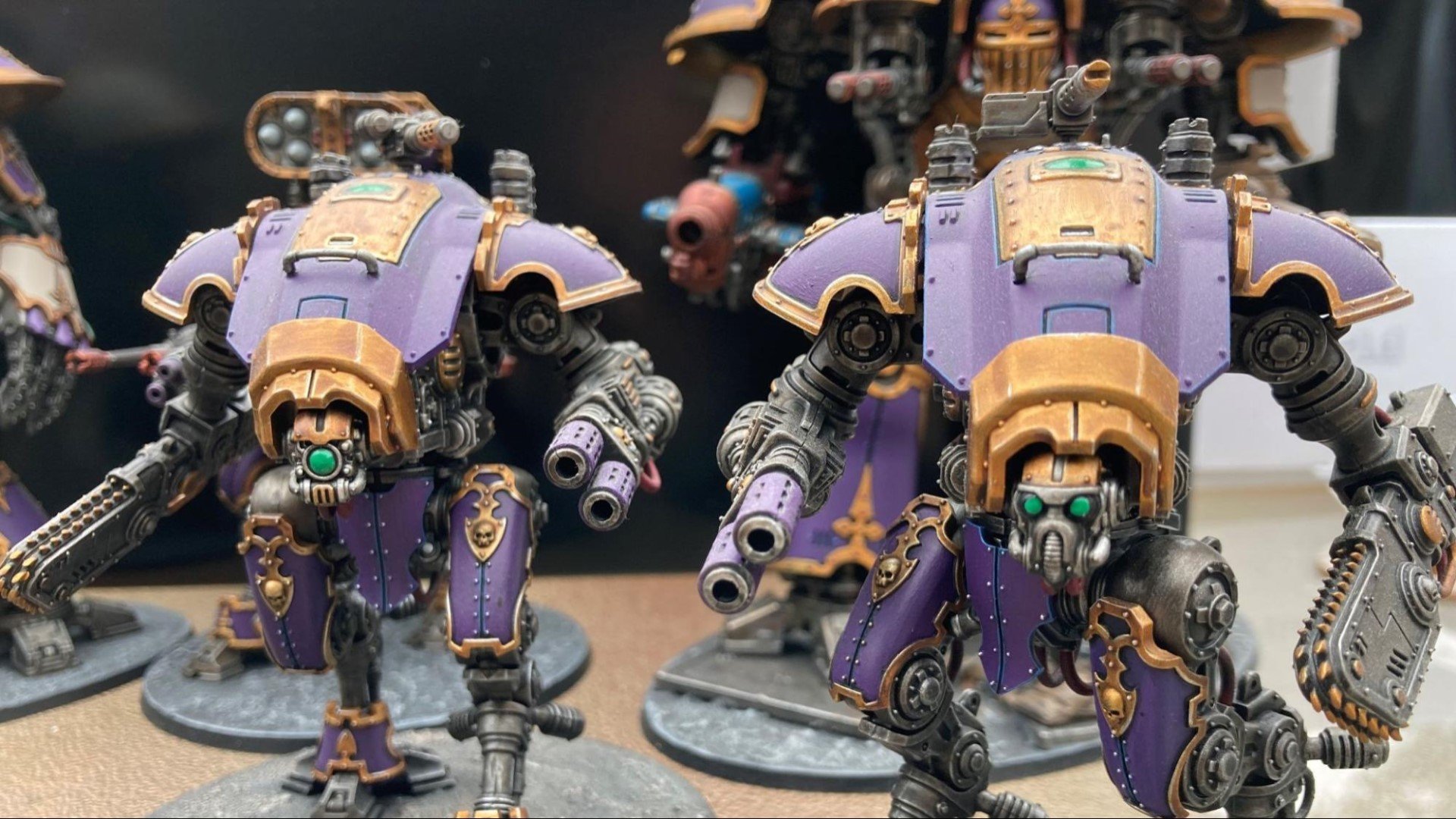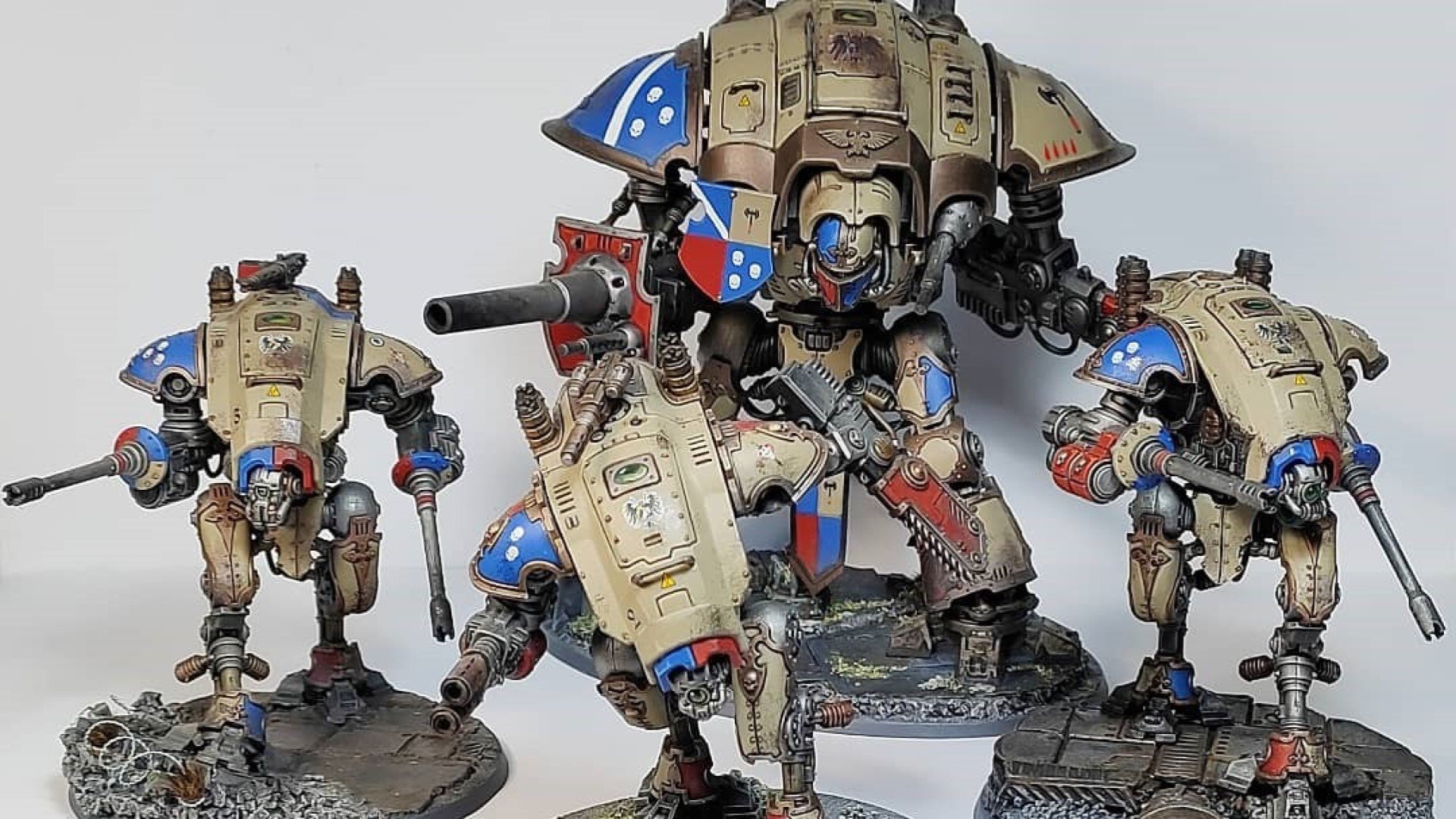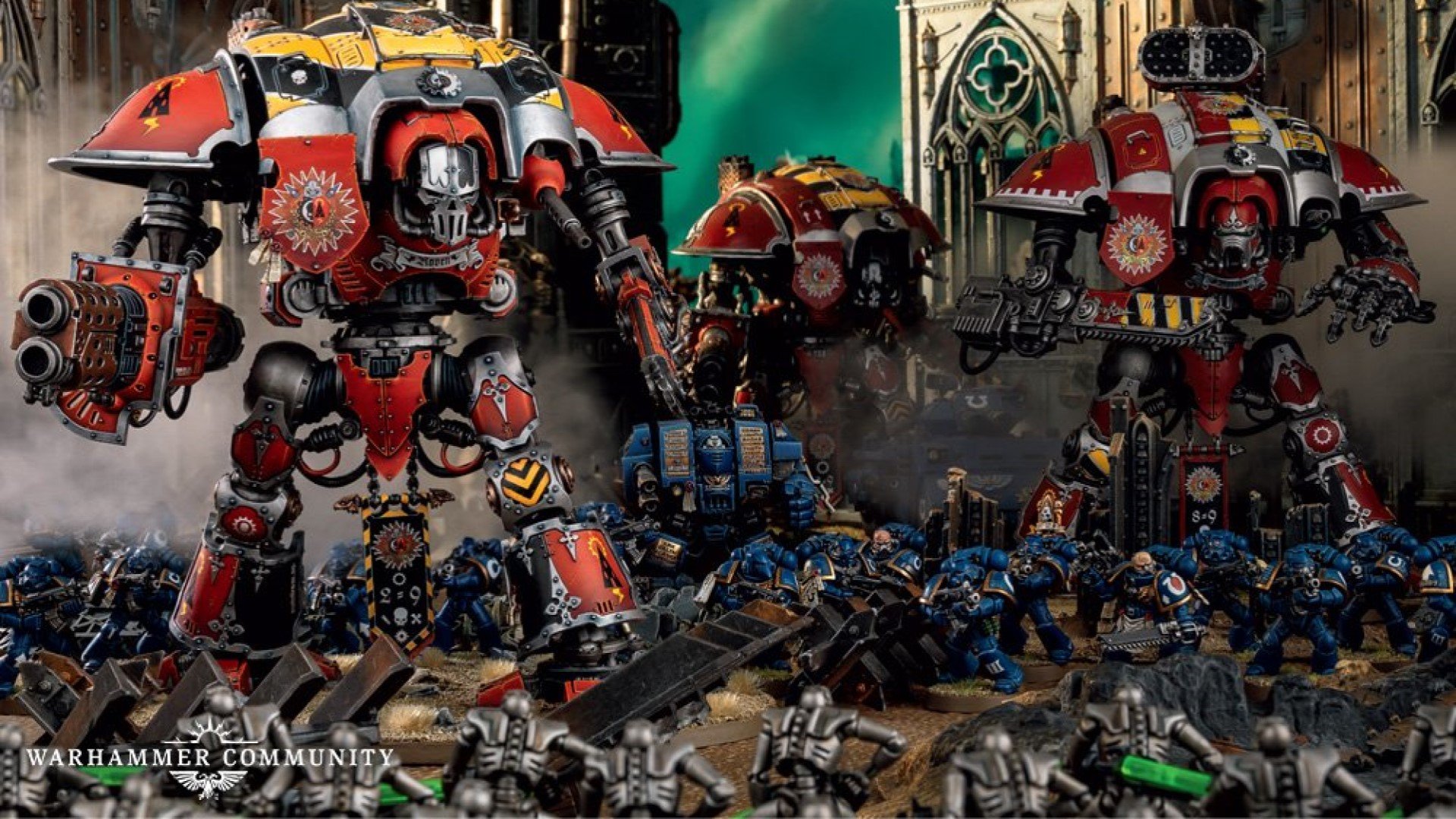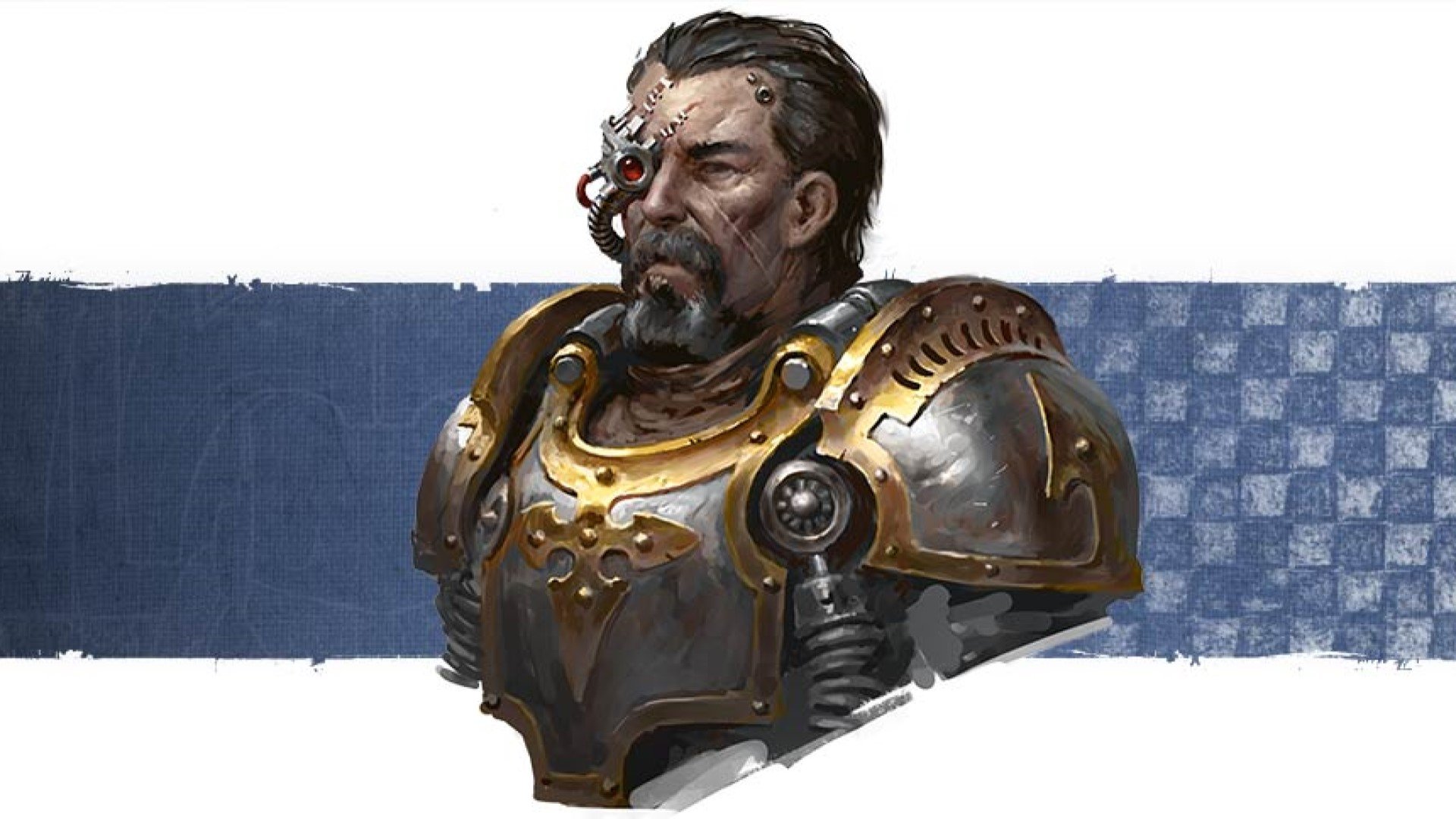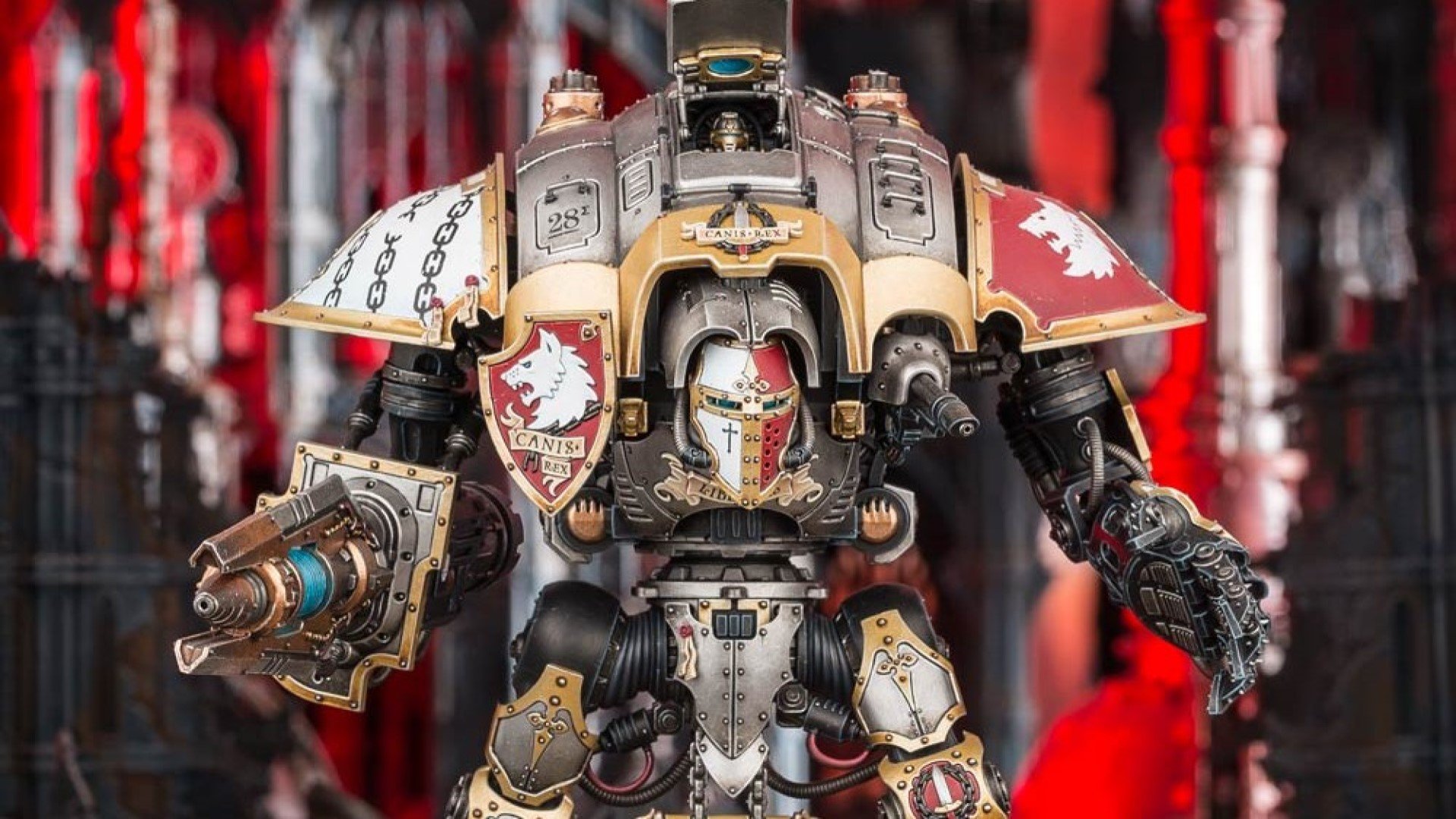When Warhammer 40k’s Imperial Knights faction rides forth into battle, the ground shudders beneath their iron tread. Each Knight is a huge warsuit constructed of impregnable adamantium, bearing weapons capable of tearing open battle tanks and rending down fortress walls. This guide has all the lore, rules, and detail you need to raise a Knights army of your own.
Among the many Warhammer 40k factions, the Imperial Knights army boasts some of the most powerful and imposing units within the armies of the Imperium of Man. It’s a perennially popular tabletop force that plays differently from any other.
To prepare you to lead a Knights army of your own, this guide has details of Imperial Knights tactics, stratagems, information from their Warhammer 40k 10th edition Index army rules, and a run-down of the main Knight classes and their weapons. Time to sally forth!
Here’s everything you need to know about Warhammer 40k’s Imperial Knights:
- Imperial Knights Index
- Imperial Knights Code Chivalric
- Imperial Knight Bondsman abilities
- Super-Heavy Walkers
- Imperial Knights Towering Keyword and the Balance Dataslate
- Imperial Knights detachments
- Imperial Knights stratagems
- Imperial Knights tactics
- Armiger Knights
- Questoris Knights
- Dominus Knights
- Forge World Knights
- Imperial Knights Combat patrol
- Imperial Knights lore
- Imperial Knight Freeblades
- Imperial Knights characters – Sir Hekhtur and Canis Rex
Imperial Knights Index
The Imperial Knights Index was released by Games Workshop on June 14, and comes with all the datasheets you need to play with Imperial Knights models in Warhammer 40k 10th edition. That includes both datasheets, the faction’s army-wide special rules, and their first Detachment, the Noble Lance.
Click here to download your free Imperial Knights 10th edition Index rules.
In addition, the Imperial Armour: Imperial Knights document adds rules for the many knights produced by Forge World.
Click here to download your free Forge World Knights 10th edition Imperial Armour Index.
This guide reflects changes to the Knights rules that come from the most recent Balance Dataslate. If you downloaded your Index early in 10th edition, it may not been up to date with the most recent rules.
Imperial Knights Code Chivalric
Millennia of tradition and a fierce code of honour contribute to the Imperial Knights Code Chivalric. This honour bond inspires them to acts of heroism, but defaming them for cowardice. On the tabletop, Imperial Knights players will select an Oath they will pursue during the battle. This isn’t part of army building – you’ll make the selection after reading your mission objectives.
The Oaths grant the Knight army an ability, and task them with completing a heroic Deed. The Oath ‘Lay Low The Tyrant’ lets each Knight in the army re-roll a hit roll and a wound roll each time they attack or shoot; its Deed requires the player to slay the enemy Warlord.
The Oath ‘Reclaim the Realm’ grants all knights +1” movement and +1 to run and charge rolls; its deed required the player to claim one or more objective marker in the enemy deployment zone.
Should a Knight player fulfil the Deed required of their Oath, they will immediately gain three command points, and their army will become Honoured. That in turn can trigger other abilities.
Imperial Knights Bondsman abilities
The junior pilots of lesser Armiger Knight Suits can be inspired to greater acts of valor – or simply have their willpower overriden – by the masters they are pledged to, reflected in the Bondsman abilities of Questor class Knights.
In your Command phase, each Questoris Knight with a Bondsman ability can select an Armiger knight within 12″; the Armiger will benefit from that Bondsman ability until your next Command phase.
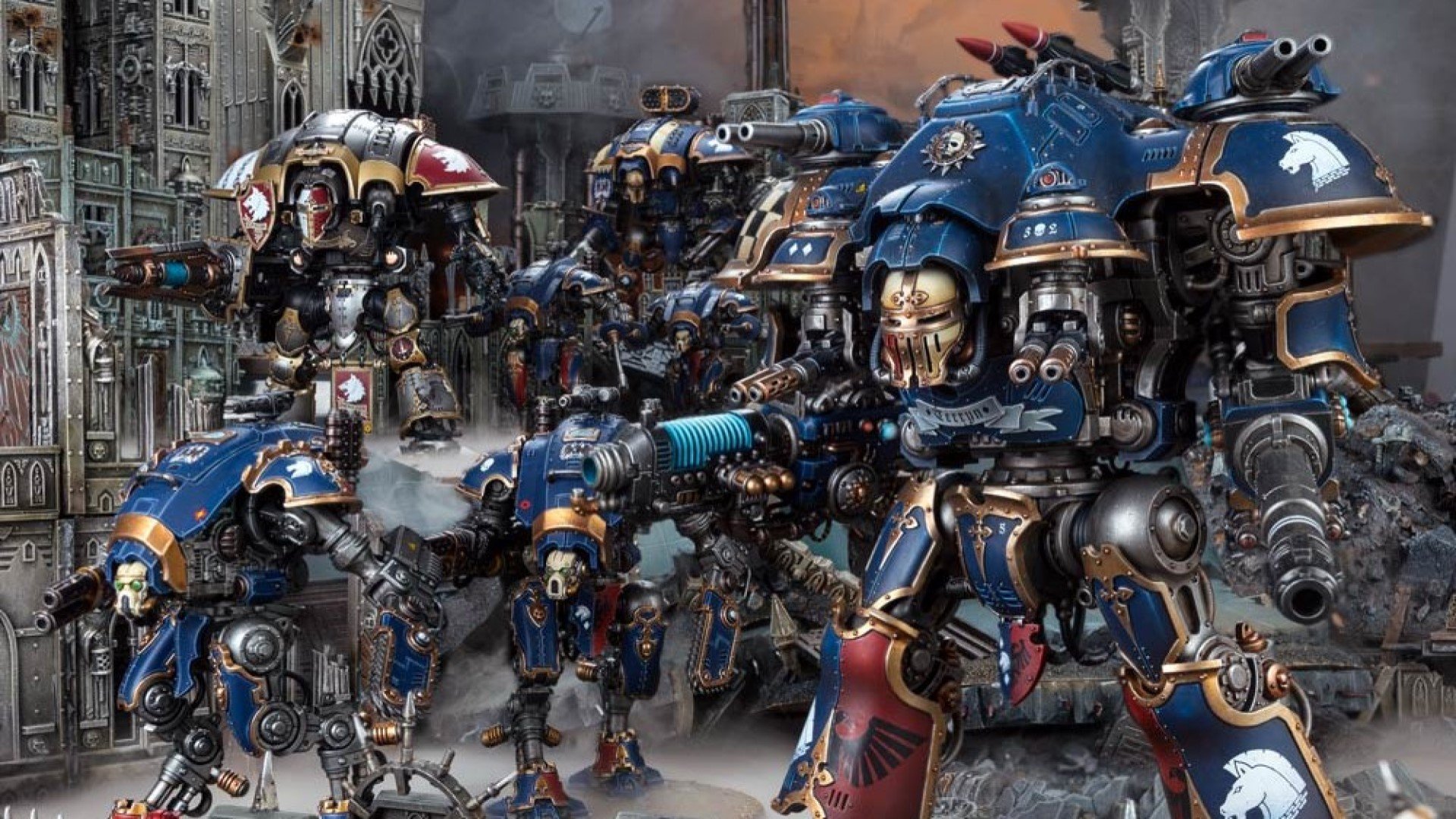
Super-heavy Walker
The biggest Imperial Knights have the Super-heavy Walker ability. This allows them to make a Normal Move, Advance, or Fall Back over models and terrain features 4″ or less tall as if they weren’t there.
Imperial Knights Towering Keyword and the Balance Dataslate.
With the exception of Armiger class Knights, all Imperial Knights have the Towering keyword. This word does not, in itself, have any rules – you won’t find it in the list of Core abilities for 10th edition. But it is referenced by other rules. What’s more, those rules have received updates in the September 7 2023 Balance Dataslate. These are the current differences between Towering units and other units:
- Towering units can see out of ruins when they are partially within the ruin, rather than entirely within it.
- Towering units cannot be chosen to Fire Overwatch.
Imperial Knights detachments
In 10th edition 40k, Detachments provide your army with an army wide rule, a set of Enhancements, and six Stratagems; they may also put restrictions on how you build your army.
The first Imperial Knights Detachment is the Noble Lance. It provides a very simple buff: your Knights have the core ability Feel No Pain 6+, which increases to 5+ when the army is Honoured.
Imperial Knights stratagems
In 10th edition, Stratagems are connected to specific detachments. There are six 40k Stratagems for the Noble Lance Detachment. Some have bonus effects when your army is Honoured.
| Stratagem | Cost | Effect | Honoured |
|---|---|---|---|
| Shoulder the Burden | 2CP | Once per battle, in your Command Phase, pick a Knight that’s lost one or more wounds. It gets +1M, +1T, +1 Save, +1Ld, +1 OC, and +1 to hit, until the start of your next command phase. | You can use this stratagem once more. |
| Rotate Ion Shields | 1CP | Pick an Imperial Knight your opponent just targeted with a shooting attack; it gains a 4+ invulnerable save against enemy shooting attacks for the rest of the phase. | N/A |
| Thunderstomp | 1CP | Pick a Knight that’s about to fight; it can’t target Monsters or Vehicles, but its attacks gain the Devastating Wounds ability. | N/A |
| Squire’s duty | 1CP | At the start of the shooting or fight phase, pick two or more armigers and one enemy they could both target: improve the Strength and AP of their weapons by one this phase. | Increase the Damage characteristic of those weapons by one. |
| Trophy Claim | 2CP | Pick a Knight that’s about to fight and target an enemy monster or vehicle; the Knight gets +1 to Wound that target. If it destroys the target, gain 1CP. If it does not, this Stratagem can’t be used again this battle. | N/A |
| Valiant Last Stand | 2CP | Just after an Imperial Knight that is eligible to fight and hasn’t fought yet is destroyed; that unit fights as though it has one wound. Then it’s destroyed (roll for Deadly Demise). Sir Hekhtur can’t use this Stratagem. | N/A |
It’s also worth mentioning the core 40k Stratagem Tank Shock. After a Vehicle charges into an enemy unit it can use Tank Shock, select a melee weapon, and roll 1D6 for each point of Strength that weapon has, +2D6 if that Strength is greater than the enemy unit’s Toughness. For each 5+ the target suffers one mortal wound to a maximum of six. As Knight melee weapons are between S10 and S20, this can deal huge amounts of damage with no saves allowed.
The special character Canis Rex has the ability to use a Stratagem for 0CP once per turn. As of the current Balance Dataslate, this kind of ability can only be used to activate Battle Tactic Stratagems. Currently that’s just Shoulder the Burden and Squire’s Duty, and Squire’s Duty can only be used on Armigers, so in practise this means Canis will Shoulder the Burden every turn.
Imperial Knights Enhancements
Because Knights have such chunky points costs, you may find you have 100 points left over in your army list – enhancements are the ideal way to use these points up. Five Imperial Knights Enhancements are available to the Noble Lance detachment.
| Enhancement | Effect |
| Revered Knight | Other Imperial Knights get +1 Leadership while within 6″, or 12″ when the army is Honored. |
| Mysterious Guardian | The bearer has the Deep Strike ability, and once per battle at the end of the opponent’s turn, provided it’s not engaged, it can leave the battlefield and return as a Reinforcement when your next turn starts. |
| Mythic Hero | Allows a Questoris Knight to target another Armiger within 12″ with its Bondsman ability. |
| Banner of Macharius Triumphant | When the bearer claims an objective at the end of your Command Phase, it remains under your control until your opponent claims it, even if you have no models contesting it. |
| Unyielding Paragon | Worsen the AP of attacks allocated to the bearer by one. |
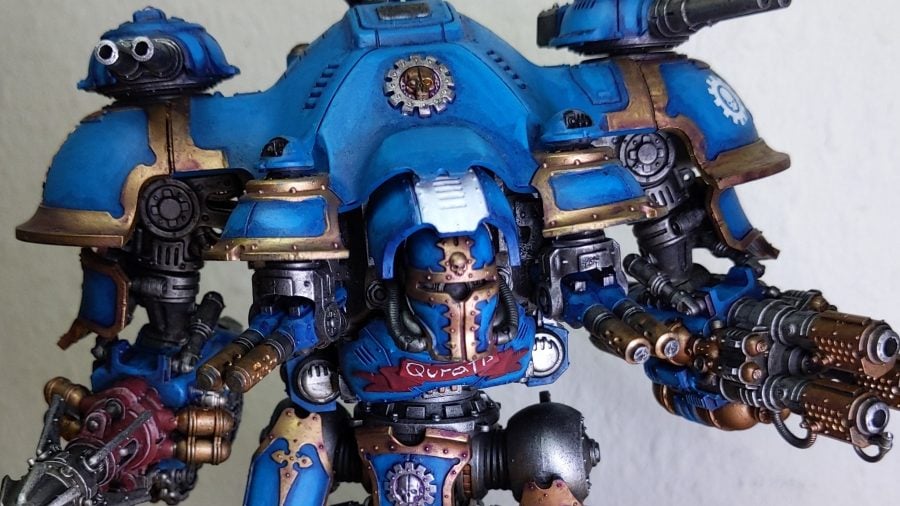
Imperial Knights tactics
Imperial Knights tactics have to take into account the incredible density of destructive power they pack into a relatively small area. Each Knight is a walking bastion of armour, force fields, and devastating firepower. Their mere footsteps can crush the mighty warriors of the Adeptus Astartes while their huge melee weapons will scythe through armoured vehicles with ease.
But, except on those terrible occasions when Imperial Knights march to war against their heretic kin, the Chaos Knights, Imperial Knights are always outnumbered. Questoris class Knights have 22 wounds, a 5+ invulnerable save against shooting attacks only, toughness 12 and a base armour save of 3+.
This is durable but far from invulnerable. High volumes of fire or competent melee attackers will bring a knight low. Remember that in 10th edition, Knights locked in combat can still be targeted by enemy fire power.
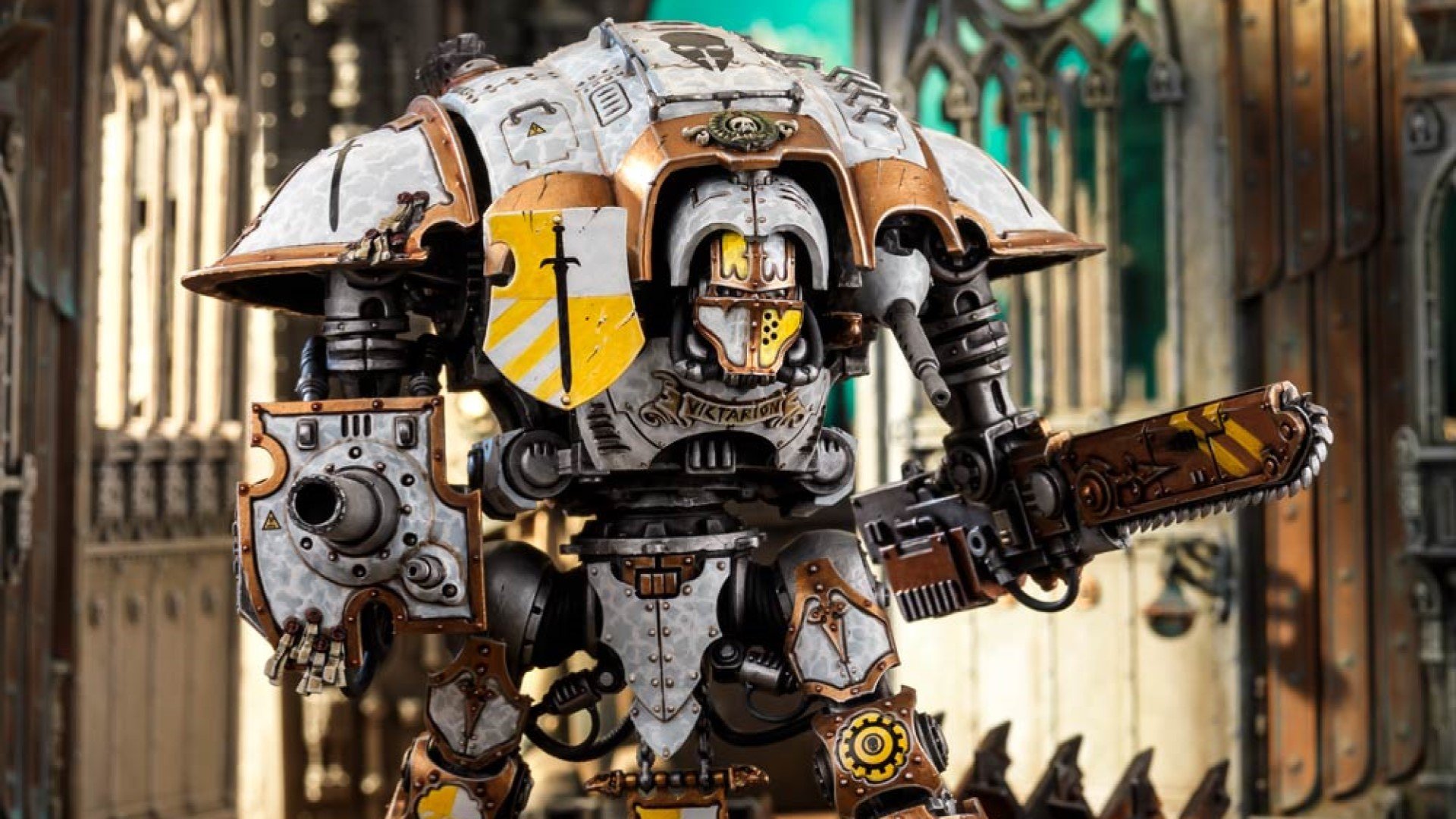
Because their power is so concentrated into so few units, Knights must be extremely careful in deployment and when committing their forces. They have no way to screen enemies away from objectives except by interposing their own metal bodies.
Every Knight can wield monumental firepower, but bringing it to bear is critical. As Super-Heavy Walkers, Titanic Knights can make Normal Moves, Fall-Back or Advance over models and terrain no more than 4″ tall.
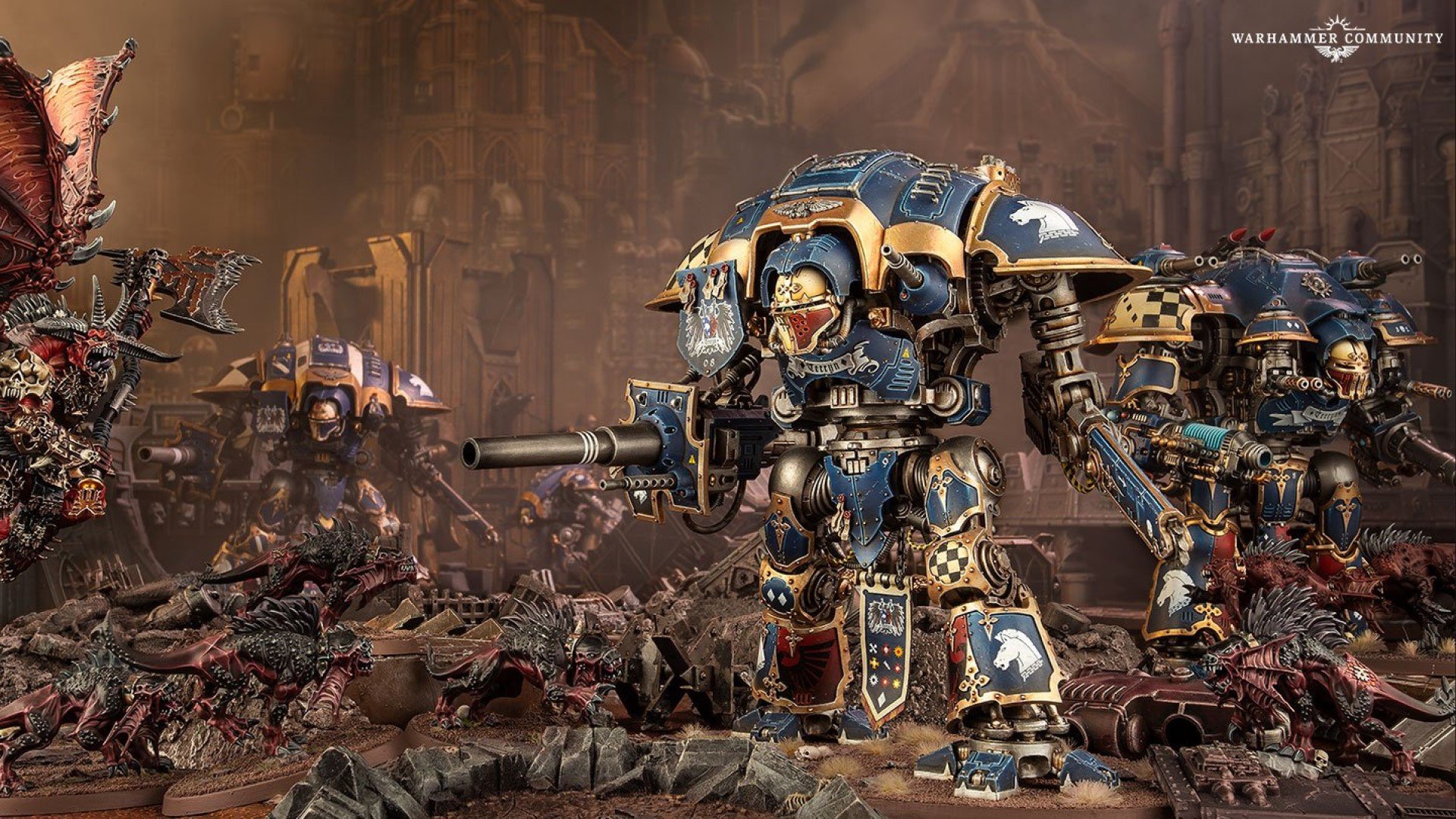
As Vehicles, Knights can fire their guns while locked in melee, but their mighty blast weapons will be disabled: this is especially punishing for the lumbering Castellan ranged weapon platform. Questoris knights with rapid fire battle cannons or a thermal cannon will lose out on most of their shooting once engaged.
Armigers count as eight models and larger knights as 10 when determining control of an objective, though these values drop off when your Knights are heavily damaged. The fact the gap is so small makes Armigers very cost effective for controlling the battlefield.
All of this adds up to a compelling case to either give your Knights a balanced loadout, or ensure your dedicated ranged Knights have support from Warglaives that can unstick them from melee. Losing an objective because your enemy put six Tactical marines onto it and your Crusader’s four Titanic feet attacks aren’t enough to stomp them flat feels miserable.
Armiger Knights
Armiger Knights are piloted by lesser nobles, illegitimate children and squires to the Knight House. Comparatively small, Armigers are like the hunting dogs to the larger Knight suits cavalry, and benefit from the tutelage of the larger Questoris Knight suits, reflected in game by Bondsman abilities.
Two Armiger class Knights are available from Games Workshop, the short-ranged Warglaive and the long-ranged Helverin. Though they’re the smallest of all Knights, these suits are armored like light tanks, with Toughness 10 and 12 Wounds.
The Helverin carries a pair of cannons that can project a hail of long-range fire, while the Warglaive has a short Reaper Chain-Cleaver and a Thermal Spear, effective anti-tank weapons or capable of ripping elite infantry to shreds.
Claiming objectives is less painful for Knights in 10th edition than it has been in previous editions thanks to the Objective Control stat. Armigers have OC8, equivalent to four dedicated objective grabbing infantry or eight regular footsloggers.
Though they’re hardly ‘cheap’, Armigers are the smallest unit you can field in an Imperial Knights army. Reserving a Helverin to hold a backfield objective is far more palatable than committing a huge Knight Castellan. Warglaives can be redirected to deal with emergent threats or sacrificed to hold up a horde or blunt an assault.
Questoris Knights
The great majority of Imperial Knight classes are built on the redoubtable Questoris Knight chassis. Though the scions of the knightly houses might contest that there are noticeable differences in the temper of the different warsuits’ machine spirits, in game terms and in their models most Questor knights differ only in their armament. Canny use of magnets in the shoulder joints of your miniatures will allow you to swap and change between the various classes.
| Knight class | Main armament |
| Paladin | Rapid-fire Battle Cannon and melee armament |
| Errant | Thermal Cannon and melee armament |
| Gallant | Reaper Chainsword and Thunderstrike Gauntlet |
| Warden | Avenger Gatling Cannon and melee armament |
| Crusader | Avenger Gatling Cannon, plus either a Thermal Cannon or Rapid-fire Battle Cannon |
| Preceptor | Las-Impulsor and melee armament |
Many knights bear devastating melee weaponry. The Reaper Chainsword is an atavistic call-back to the Knight’s origins as an agricultural machine, a twelve-foot chainsaw that will damage elite infantry and light vehicles on a 2+ and all but the toughest tanks on a 3+, and cleaving through all but the thickest armour. It can also Sweep, tripling its attacks while maintaining enough strength, AP and damage to rip apart Space Marines.
The Thunderstrike Gauntlet is a slower but more potent weapon, with Strength 20, dealing an absurd 8 damage on a wound, though not able to throw out quite as many dice when making a crowd-clearing Sweep attack.
The brash pilots of Gallant class knights wield both of these catastrophic weapons, and have two more attacks with each weapon (which, again, is increased by Sweep attacks) to compensate for the slight redundancy of carrying two short-range weapons that can carve a tank in two.
Weapon Abilities now make some classic Knight weaponry really interesting. The Rapid Fire Battle Cannon remains a Blast Weapon, with D6+3 attacks and respectable strength, but it now lives up to its namesake by gaining the Rapid Fire D6+3 weapon ability. At close range it’ll fire at least 2D6+6 shots, +1 for each five models in the enemy unit.
The Thermal Cannon is a Blast 2D3 anti-tank gun. An over-sized melta-weapon, its S12 lets it wound other Knights and medium armored vehicles on a 4+, dealing D6 damage. That increases to D6+6 within half range, thanks to the Melta 6 rule.
If you’d rather your Knights were armed with a minigun the size of an affordable family car, the Avenger Gatling Cannon is for you. With 18 Strength 6 AP-2 damage 2 shots this is a reliable tool to pulp Space Marines.
Only the Knight Preceptor bears the Las Impulsor, a curious rapid firing laser weapon with the Blast keyword that fires D6 high-Strength, anti-armour shots at short range, and 2D6 anti-infantry shots at long range.
Reflecting the Preceptor’s role as a mentor to novice Knights, the Preceptor’s Bondsman ability increases the OC and Leadership of its Bondsman by one. The ‘Exemplar of the Code’ lets the Preceptor choose an enemy unit to make a lesson out of at the start of the game, granting them re-rolls to Hit against that target.
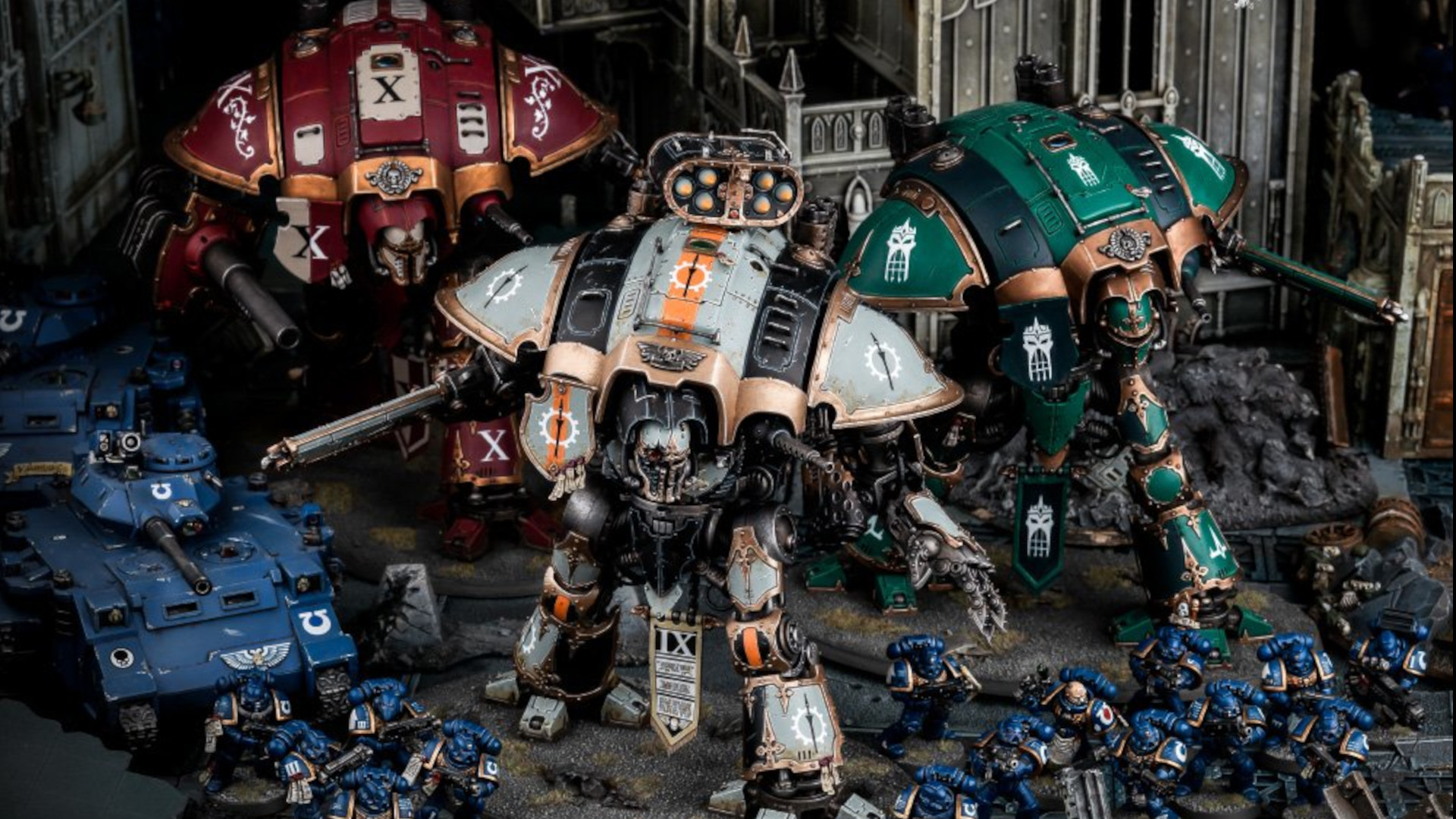
These Questoris knights can all be fitted with carapace mounted weapons: the anti-aircraft Twin Icarus Autocannons, parabolic Ironstorm Missiles that can target units outside line of sight, and dedicated anti-tank Stormspear Rocket Pod.
Add in a smattering of ancillary guns (Meltaguns or Heavy Stubbers mounted in the torso, a Tracer Heavy Stubber in the Rapid-fire Battle Cannon, and underslung Heavy Flamer in the Avenger Gatling Cannon), and Imperial Knights bristle with heavy weaponry.
Dominus Knights
A massive plastic Knight kit made by Games Workshop, the Dominus Knights are walking battleships, bristling with firepower. Reflecting their predilection for ranged combat, Dominus-class Knights are slow and cumbersome when caught in melee (though their giant footfalls are still deadly). Two Dominus kits are available, the Castellan and the Valiant.
| Knight Class | Main armaments |
| Castellan | Plasma decimator and Volcano lance |
| Valiant | Conflagration cannon and Thundercoil harpoon |
Both Dominus have a pair of twin-meltaguns for short-range defense against other Knights or similarly large close-range combatants. Their carapace mounts a combination of single-shot invulnerable-save-ignoring shieldbreaker missiles, and twin-siegebreaker cannons, tiny weapons on the Dominus but large enough to be the main gun on most APCs or light tanks.
Both also project an Ion Aegis Aura that grant Arimgers within 6″ the benefit of cover.
The Castellan is equipped with immense long-ranged firepower. The Volcano Lance is a minimised version of the laser-weaponry mounted on space ships, a D3 shot, Strength 18, AP-5, damage D6+8 weapon with the Blast ability. The Plasma Decimator has D6+3 shots at Strength 8 AP -2 D2, again with the Blast ability, which can be overcharged to S9, AP-3, D3 at the risk of becoming Hazardous. The Titan Hunter ability allows the Castellan to re-roll Damage rolls of one.
If your opponent has brought only a limited quantity of anti-tank weapons, the Castellan can wipe them away in a single salvo. Just remember that almost all the weaponry borne by the Castellan is a blast weapon, which cannot be brought to bear when engaged in melee, so it is extremely vulnerable to being tied up by chaff.
Where its sibling is reserved, the Valiant is a front-line bruiser. It carries the enormously oversized Conflagration Cannon and the Thundercoil Harpoon.
The Conflagration Cannon is a 3D6 torrent weapon that ignores cover. With S8, AP-1, D2 it will incinerate most infantry, though Terminators and equivalent will have a good chance to survive. Most significantly, this isn’t a blast weapon so the Valiant can use it to clear itself out of melee.
The Thundercoil has even better armour penetration than the Titan-hunting Astra Militarum volcano cannon, though slightly fewer shots. With S24, AP-6, and Damage 12, its raw stats are absurd, before you add in the Weapon Abilities Anti-Monster 4+, Anti-Vehicle 4+, and Devastating Wounds, which mean that Monsters and Vehicles cannot take armor or invulnerable saves against of wound rolls of 4+.
Each shooting phase, it can force one enemy unit that it targeted (and that somehow survived) to take a Battle-Shock test.
Forge World Knights
There are as many Forge World Knights – made by Games Workshop’s specialist studio Forge World – as there are by Games Workshop itself. These vehicles were prolific during the Horus Heresy but are rare by the time of the Dark Millennium.
In 2022 GW released a new Cerastus Lancer kit, followed by a Cerastus Acheron and Cerastus Castigator, translating older designs from resin to plastic. The other Forge World kits are for truly dedicated collectors. They combine plastic components with resin conversion parts, and the largest, most imposing knights are made entirely from resin.
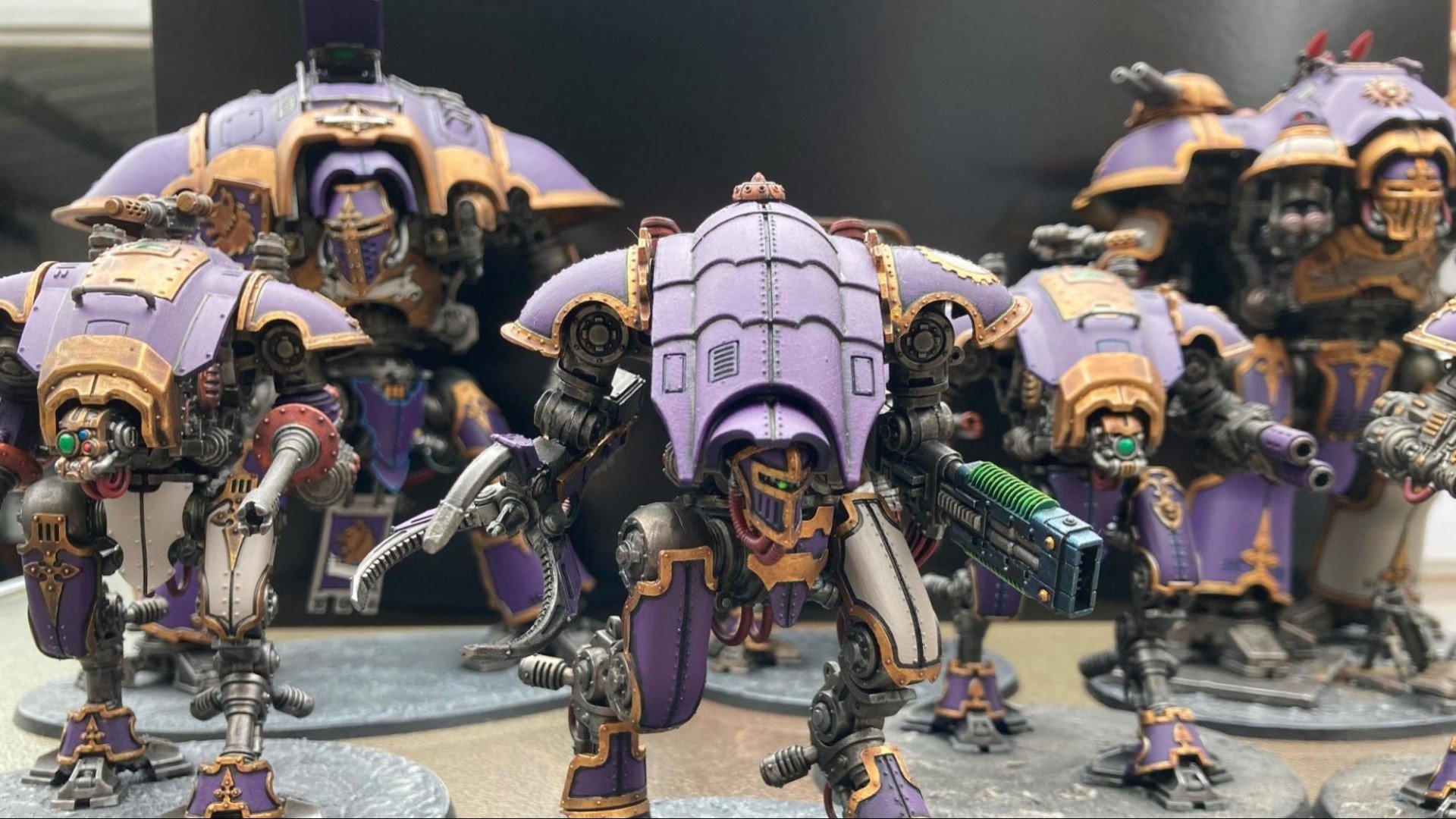
Rules for these magnificent war engines appear in a special Imperial Armor Index. The Moirax is a variant Armiger, and the Styrix and Magaera are variants on the Questor chassis. More imposing (and more expensive), the Lancer, Acheron, Castigator and Atropos are all Knights of the long-limbed Cerastus class, faster and sturdier than their Questor counterparts.
The absurdly bulky Porphyrion and Asterius occupy the Acastus class. They’re the largest vehicles that a single pilot can control through a Throne Mechanicum without losing their mind to the mount’s belligerent machine spirit.
Index rules are available for all these Knights, so they’re fully playable in the latest edition.
Imperial Knights Combat Patrol
There is no recommended Combat Patrol force for Imperial Knights and, with their incredibly high toughness compared to the anti-infantry weaponry ported by the forces in the other combat Patrol boxes, we don’t think there will be one.
When your army is made from 80-ton walking war engines, you don’t expand your force in small steps, you do it in great strides that shatter the earth beneath your mighty tread, so there isn’t really a “shallow end” for building a Knight army.
If you want to get started, we advise picking up at least two Armigers to start your force. Not only are these relatively cheap in terms of points and cash, their higher Objective Control values and lower points cost make them essential for doing the boring jobs while your Questoris and Dominus class knights get the glory.
Imperial Knights lore
In Games Workshop’s grimdark far future, Imperial Knights lore reveals that these war-walkers are centuries-old relics of ancient technology. They have been maintained by the devotion of generations of tech adepts, and are ridden into war by the scions of a venerable knightly household.
Combining the medieval romance of the questing chevalier with the raw firepower of a 40-foot-tall mech suit, Imperial Knights join battle bedecked with pennants and decorated with livery that proclaims their lineal oaths, their rolls of honour, and histories of conquest.
The first Knights date back to the Dark Age of Technology, when the ascendant human species colonised the galaxy using powerful technologies now long forgotten. Flexible Standard Template Construct systems enabled the construction of any tool mankind might need on the worlds it claimed.
The design for the Knight war-suit was adapted from industrial and agricultural machines employed on hardy frontier worlds. The improvised war machines enabled those first colonies to defend themselves against native beasts, xenos raiders and stranger things besides.
Knight suits psychically bond with their pilot through the control interface known as the Throne Mechanicum. The powerful machine spirit of the Knight suit influences the pilot, imbuing them with the desire for glory and the urge to dominate the realms around them, while the pilot’s consciousness seeps into the Throne Mechanicum.
Over time, a Throne Mechanicum will accrete generations of mental imprints from the pilots who bonded with them. At the same time, the Knights exert an influence over the society of their worlds. Between the psychic impression of the Throne Mechanicum, and their inevitable role as defenders and commanders, the Households of Knights have risen to positions of hereditary, feudal control over their worlds.
In the time of horror known to historians as Long Night or the Age of Strife, the worlds of mankind languished in terrified isolation. Tempestuous warp storms made galactic travel a nigh-impossibility, shattering any hope of interstellar civilization.
Mankind was at the mercy of warp-borne monstrosities and xenos predators. In this darkness, the Knight Worlds blazed like beacons. With reaper chainsword and battle cannon, their mighty warriors held back the foes that sought to devour mankind.
When the Emperor’s Great Crusade reunited the human homeworld with its lost children, the Knight houses were quick to bend the knee. Some pledged to the Forge Worlds of the Mechanicum, reforging ancient bonds that had existed in the Age of Technology, losing their independence to the relentless demands of the machine cult but gaining a great boon of irreplaceable technology, becoming the Questor Mechanicus. Others swore to the Emperor and his Imperium, the romance and vision of the Great Crusade calling to their chivalric hearts – these are known as the Questor Imperialis.
For 10,000 years the Knight Households have waged the Imperium’s wars, hurling back rebels, aliens and heretics with gallant charges of their massive war engines. Since the Cicatrix Maledictum split the galaxy in two, separating the far side from the Emperor’s light, the Knight Worlds are amongst the few bastions to hold back the tides of darkness that besiege the so-called Imperium Nihilus. Just as they did in the Age of Strife, so the Knight Houses defend mankind from unthinkable foes.
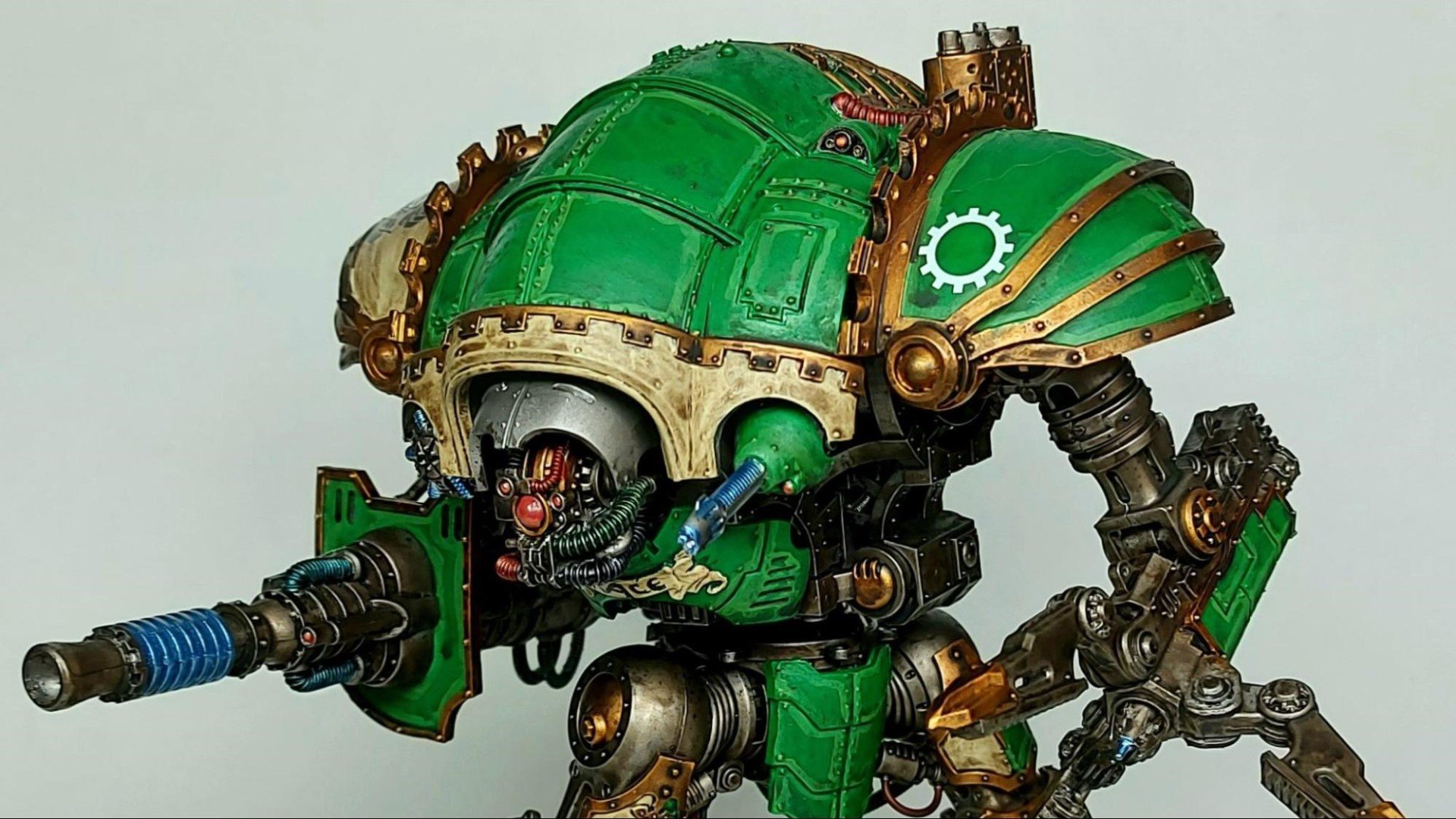
Imperial Knight Freeblades
The Freeblades rule in 10th edition allows up to one Titanic Knight or up to three Armiger Knights to join any other Imperium army; they can’t be made the army Warlord or given any Enhancements, but they also don’t interfere with the faction’s army benefits.
The lore behind freeblades is dramatic. These Knights owe fealty to no Household. Some have seen their comrades in arms slain to the last, powerless to save those they fought beside. Others are disgraced warriors who have broken the codes of honour they swore to uphold, sentenced to exile. Then there are those whose have fled in disgust from a Household that has turned away from the Emperor’s light.
Whatever the cause, Freeblade Knights bear a terrible burden, a source of pain and also inner fire, seeking to right past wrongs, wash away their dishonour or simply wreak terrible vengeance upon the foes that took everything from them.
If you love the idea of world-weary warriors and misfits banding together, or luxuriate in converting bespoke vehicles, a ‘seven Samurai’ style Freeblade Lance may be just right for you. In ninth edition there were rules for fielding this kind of force, and it’s really likely that they’ll show up as a new Detachment in 10th edition when the Codex comes out.
Imperial Knights characters – Sir Hekhtur and Canis Rex
Sir Hekhtur Cerberan is the last loyal son of House Cerberan. Hailing from the Knight World of Randoryn Alpha, Sir Hekhtur and his Knight Preceptor Canis Rex fought side by side with the rest of his Household when the heretic forces of the Iron Warriors Chaos Space Marines sought to claim their world.
Though the Knights fought a staunch defence and reaped a bloody tally on their foe, they were gradually encircled, besieged, captured, or destroyed. Death was not to be their fate, though: each Knight was subjected to horrific torture, while Dark Mechanicum hereteks and warpsmiths set to work corrupting the spirits of their war machines. Of all House Cerberan, only Sir Hekhtur was not killed or corrupted.
Perhaps sensing its master’s unyielding resolve, perhaps urged to motion by the Emperor’s will, Canis Rex somehow broke from the bonds of the hereteks attempting to subvert it, and smashed a path to its master. Together with other Imperial survivors, they escaped, forming the core of the Randoryn resistance.
Sir Hekhtur was unable to save his world, but, rather than laying down his life in pursuit of vengeance or redemption, he engineered an escape aboard a stolen shuttle. Now he is the Chainbreaker, always at the frontline of the Imperium’s wars to liberate worlds languishing under the shackles of the arch-enemy.
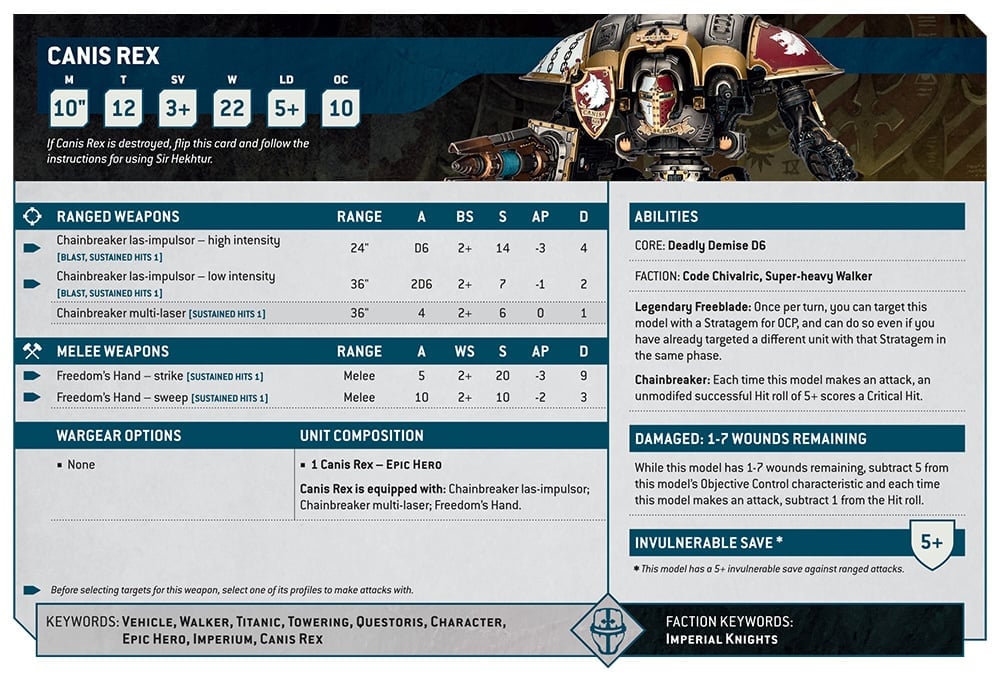
We also get to see some of the new stats for the extremely potent weapons that Knights port around. Canis Rex’s ‘Chainbreaker las-impulsor’ can be fired on two settings, high intensity – which has D6 attacks, S14, AP -3, four damage – and low intensity – which has longer range, twice the shots, S7, AP -1, two damage. Both fire modes have the Blast and Sustained Hits Weapon Abilities, inflicting extra hits on a ‘Critical Hit’ roll – which Rex scores on unmodified hit rolls of 5+ instead of six, thanks to his Chainbreaker ability.
Sir Hector is a Legendary Freeblade; once per turn you can target him with a Stratagem for 0CP, even if another unit has been targeted by that Stratagem this phase.
With thanks to @40ksteve for photographs of his creamy smooth House Griffith, Stephen Reynolds for his lush green and cream Knight Castellan, Knight Crusader and Knight Magaera, @Pratheos for his royal purple and white Armigers and Knight Errant, and Alan Bailey for his intimidating purple and gold knight lance.
